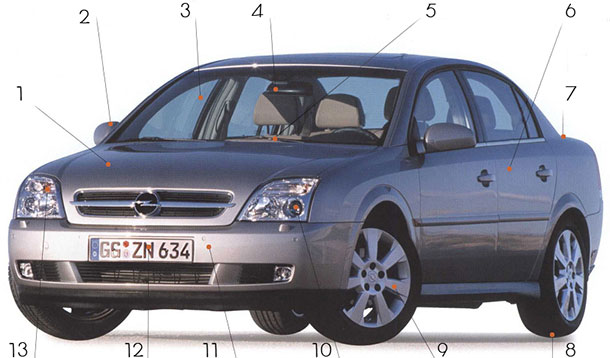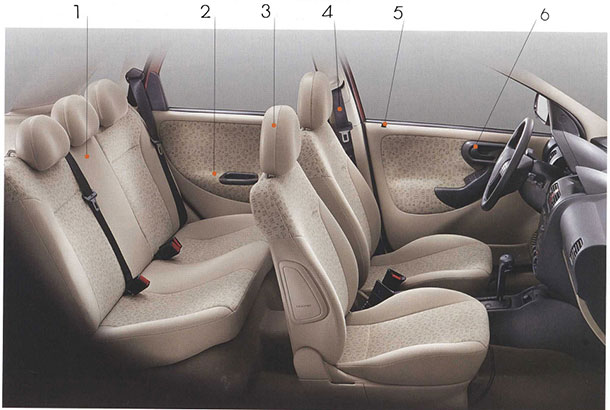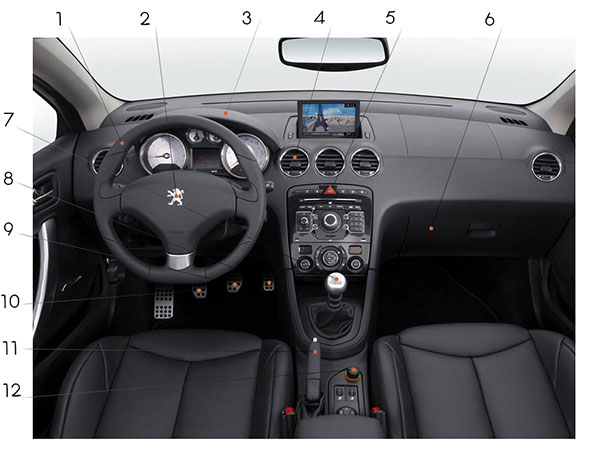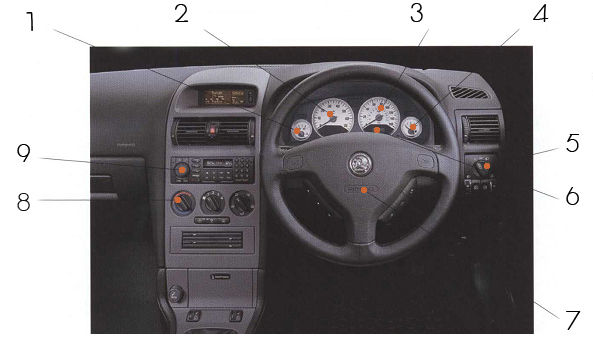Перейти к контенту
Руководство на английском языке по техническому обслуживанию и ремонту автомобилей Toyota Carina E и
Руководство на английском языке по техническому обслуживанию и ремонту автомобилей Toyota Carina E и
Сборник руководств на английском языке по техническому обслуживанию и ремонту автомобиля Toyota FJ Cruiser
Руководство по эксплуатации и техническому обслуживанию автомобиля Toyota Avensis 2005 года выпуска. Рекомендуем перед
Руководство по эксплуатации и техническому обслуживанию автомобиля Toyota Land Cruiser 2005 года выпуска. Рекомендуем
Руководство по эксплуатации и техническому обслуживанию автомобиля Toyota Camry серии XV30 2006 года выпуска.
Руководство по эксплуатации и техническому обслуживанию автомобиля Toyota Corolla с 2007 года выпуска. Рекомендуем
Сборник руководств на английском языке по техническому обслуживанию и ремонту автомобиля Toyota Avalon 2001
Мультимедийное руководство по эксплуатации, техническому обслуживанию и ремонту автомобилей Toyota Echo/Yaris/Yaris Verso 1999-2005 годов
Руководство на английском языке по техническому обслуживанию и ремонту автомобиля Toyota Land Cruiser 50-й
МИНИСТЕРСТВО ЛЕСНОГО ХОЗЯЙСТВА
И ОХРАНЫ ОБЪЕКТОВ ЖИВОТНОГО МИРА НИЖЕГОРОДСКОЙ ОБЛАСТИ
Государственное бюджетное профессиональное
образовательное учреждение Нижегородской области
«КРАСНОБАКОВСКИЙ ЛЕСНОЙ КОЛЛЕДЖ»
(ГБПОУ НО «КБЛК»)
МЕТОДИЧЕСКИЕ УКАЗАНИЯ
по дисциплине «Иностранный язык
в профессиональной деятельности (Английский язык)»
для студентов IV курса
«Инструкции и руководства при использовании приборов
технического оборудования автомобиля»
для специальности 23.02.07 «Техническое обслуживание
и ремонт двигателей, систем и агрегатов автомобилей»

|
РАССМОТРЕНО: на заседании предметно-цикловой комиссии общеобразовательных дисциплин ПРОТОКОЛ № от « » сентября 2021г. Председатель ПЦК____________________ |
Составили: преподаватели иностранных языков Воронина М.В., Булкина Т.А. |
Красные Баки
2021
Lesson 1
Instructions and Guides: Vocabulary
1. Translate the following word combinations:
Чистые фары; проверьте задний фонарь; стоп-сигналы; убедиться; лобовое стекло; шина; давление воздуха; повреждение; двигатель; застегнуть; путь; часть дороги; невидимая водителю машины задняя сторона автомобиля; зеркало задней обзорности; тормозная система; руководство; устанавливать; осторожный; предвидеть; проверьте, чтобы фары были чистые; убедитесь, что свет и сигналы поворота работают нормально.
2. Translate the following words and word combinations:
Blind spots; make sure; rear; rearview mirror; adjust; braking system; anticipate; prudent; buckle up; engine; clean headlights; check for taillights; windshield; brake lights; tire; damage air pressure; path; check for clean headlights; make sure all light and turn signals work properly.
3. Read and translate the text “Preparing to drive”
Before operating a vehicle:
— check for clean headlights, taillights and brake lights. Make sure all lights and turn signals work properly. Clean the windshield and windows;
— check the tires for proper air pressure and for any possible damage:
— check in front and behind the vehicle for objects, animals or persons in your path.
Before starting the engine:
— make sure you are positioned in the driver’s seat;
— make sure you and all passengers, including children, are properly buckled up;
— check mirrors and check again for anything in your path. As a driver, you have at least two blind spots: to the left rear and right rear of the vehicle. Make sure the inside rearview mirror is properly adjusted so you can see the center of the road and any traffic behind the vehicles. Adjust the left outside mirror to see the left edge of the vehicle when seated in a normal driving position. If there is a right outside mirror, adjust it to permit a clear view of the right rear edge of the vehicle;
— turn your head to check the blind spots before every lane change. You cannot get rid of blind spots, but can make them smaller by properly adjusting the mirrors;
— know what type of braking system the vehicle has. If it has antilock brakes, be sure to read and follow the instructions in the owner’s manual.
4. Fill in the blanks with appropriate words: to check, brake, damage, engine, passenger, to adjust, to drive, path, signal, window
1. You should always ____ your oil, water, and tires before taking your car on a long trip.
2. She had no _____ on her bicycle.
3. The doctors were worried that he might have suffered brain _______.
4. My car’s been having ______ trouble recently.
5. Two _______ trains were involved in the accident.
6. If the chair is too high you can _____ it to suit you.
7. They’re _____ing to Scotland on Tuesday.
8. They followed the ____ until they came to a gate.
9. The ______ for a race to start is often the firing of a gun.
10. He caught me staring out of the _______.
5. Translate the sentences:
1. Make sure the inside rearview mirror is properly adjusted so you can see the center of the road and any traffic behind the vehicle.
2. Adjust the left outside mirror to see the left edge of the vehicle when seated on a normal driving position.
3. This speed is never faster than the posted speed limit.
6. Match the words from the left-side column with their definitions from the right-side column:
|
1. to check |
a. a route or track between one place and another, or the direction in which something is moving |
|
2. brake |
b. a person who is travelling in a vehicle but is not driving it, flying it, or working on it |
|
3. damage |
c. an action, movement, or sound that gives information, a message, a warning, or an order |
|
4. engine |
d. to make certain that something or someone is correct, safe, or suitable by examining it or them quickly |
|
5. passenger |
e. a machine that uses the energy from liquid fuel or steam to produce movement |
|
6. to adjust |
f. harm or injury |
|
7. to drive |
g. a device that makes a vehicle go slower or stop, or a pedal, bar, or handle that makes this device work |
|
8. path |
h. a space usually filled with glass in the wall of a building or in a vehicle, to allow light and air in and to allow people inside the building to see out |
|
9. signal |
i. to change something slightly, especially to make it more correct, effective, or suitable |
|
10. window |
j. to move or travel on land in a motor vehicle, especially as the person controlling the vehicle’s movement |
Lesson 2
Infinitive forms
Инфинитив (the Infinitive) – это неличная форма глагола, которая называет действие. Инфинитив является основной формой глагола и представляет глагол в словаре. Признаком инфинитива является частица to:
to help – помогать, to read – читать.
Инфинитив употребляется без частицы to в следующих случаях:
You had better go now. – Лучше уйди / иди сейчас.
I must see you at once. – Мне надо сейчас же встретиться с тобой.
Формы инфинитива
|
Forms |
Active |
Passive |
|
Indefinite |
to write |
to be written |
|
Continuous |
to be writing |
– |
|
Perfect |
to have written |
to have been written |
|
Perfect Continuous |
to have been writing |
– |
Инфинитив в форме действительного залога обозначает действие, произведённое лицом, выраженным в предложении подлежащим, а в страдательном залоге – действие, направленное на это лицо.
I like to help. – Я люблю помогать.
I like to be helped. – Я люблю, когда мне помогают.
Инфинитив в Indefinite Active обозначает действие, не уточняя характер его протекания. Инфинитив в Continuous Active подчеркивает длительность действия.
She likes to write letters. – Она могла писать письмо.
She must be still writing. – Она, должно быть, все еще пишет.
Неперфектный инфинитив выражает действие, одновременное с действием глагола-сказуемого (или следующее за ним).
Перфектный инфинитив выражает действие, предшествующее действию, выраженному глаголом-сказуемым.
I am glad to study at the College. – Я рад, что учусь в колледже.
I am glad to have studied at the College. – Я рад, что учился в колледже.
После глаголов love, like, dislike, hate, start, begin, continue, stop и др. может употребляться как инфинитив, так и глагол с окончанием –ing.
Например: I love to watch / watching actions films.
He likes to play / playing football.
She hates to wash / washing the dishes.
|
NB! |
They enjoy reading. I am finishing reading this book. |
|
to stop doing smth – not to continue an activity to stop to do smth – to stop what are you doing in order to do smth |
1. Translate the sentences:
1. I’d like to go home early today.
2. It’s nice to be sitting here.
3. I’m glad to have left school.
4. He doesn’t like to be interrupted while he’s working.
5. I remember to have been asked this question.
6. I’d like to have been sitting there when she walked in.
7. She asked me not to forget to post the letter.
8. I was sorry not to have phoned you.
9. We must make careful plans.
10. I would rather go by myself.
2. Open the brackets
1. I (to love, to read) and (to listen) to the music.
2. He (not to like, to play) chess.
3. We (to like, to correspond) with each other very much.
4. Bob (to hate, to wash the dishes).
5. We (to enjoy, to travel) round our country.
6. They (to like, to chat) with each other in the evenings.
7. Mary and her Mum (to love, to do shopping).
8. My parents (not to like, to go) to the theatre.
3. Define the forms of the Infinitive (Passive or Active; Indefinite, Continuous, Perfect or Perfect Continuous) in the following sentences.
-
I want to see your design.
-
It can be done.
-
The mistake must be found.
-
We knew him to be working in the room.
-
They are likely to be being served now.
-
I remember to have seen her somewhere.
-
We thought the mistake to have been found.
-
He must have been working all night.
-
She appeared to have been leading a very busy life before.
-
It’s nice to be sitting here with you.
-
It’s good to have finished work for the day.
-
I’m sorry not to have come on Friday.
-
I appear to have made a small mistake.
-
I didn’t expect to be invited.
-
There is a lot of work to do.
-
There is a lot of work to be done.
4. Write the sentences, underline the infinitive and translate each sentence:
1. I was surprised to see that you were here.
2. I did not forget to cancel that appointment.
3. With Roger here, I am never going to finish my work.
4. I wish that I could afford to get my hair cut.
5. I may decide to forgo dessert this evening.
6. If Ken remembers to buy tissues, it will be a miracle.
7. I have always wanted to learn how to cook.
8. He neglected to stir the pudding, and now it’s burnt.
9. He has decided not to pursue a career in the law.
10. The kids really like to play on the Wii.
11. The turtle I found refused to emerge from its shell.
12. My plan is to read to the class in the morning.
13. My fear is that it will continue to rain all weekend.
14. That girl loves to ride the big palomino horse.
15. We will all get good grades if we commit to study.
5. Answer the questions using Infinitive and the words: exhibition, play, picture, profession, travel leaflet, mushrooms, book, bread, magazine, movie.
Example: 1) Why are you going to the baker’s? To buy some bread.
2) Why are you going to the bookshop?
3) Why is he going to the travel agent’s?
4) Why are they going to the post office?
5) Why is she going to the forest?
6) Why are we going to the museum?
7) Why is he going to the gallery?

9) Why is she going to the cinema?
10) Why is he going to the college?
6. Translate the sentences:
-
Они обещали прочитать мой отчет сегодня.
-
Я наконец-то закончил читать эту книгу!
-
Вместо этого мы решили пойти в кино.
-
Я предлагаю оплатить чеком, это безопаснее, чем наличными.
-
Я хотел бы пойти на вечеринку с тобой.
-
Я не люблю ждать.
-
Я не хочу уходить.
-
Я предложил помочь.
-
Мы не можем позволить себе купить новую машину в этом году.
-
Наконец я смог закончить работу.
-
Она пыталась достать книгу с высокой полки, но была слишком маленького роста.
-
Учитель ожидал, что Сара будет усердно учиться.
-
Он научился кататься на велосипеде в возрасте 5 лет.
-
Ты знаешь, что делать, если в магазине будет пожар?
-
Найти хороших друзей не просто.
Lesson 3
Instructions and Guides: practice of reading and translating
1. Match a–f with 1–6 to make rhythms.
|
1) flows 2) fan 3) true 4) cost 5) pin 6) rank |
a) tank b) most c) thin d) goes e) through f) pan |
2. Read, translate the text:
A radiator is a type of heat exchanger. It is designed to (transfer, deliver, replace) heat from the hot coolant that flows through it to the air blown through it by the fan.
Most modern cars use aluminum radiators. These radiators are made by brazing thin aluminum fins to flattened aluminum (tubes, columns, wires). The coolant flows from the inlet to the (outlet, exit, way out) through many tubes mounted in a parallel arrangement. The fins conduct the (heat, temperature, warm) from the tubes and transfer it to the air flowing through the radiator.
The tubes sometimes have a type of fin inserted into them called a turbulator, which increases the turbulence of the fluid flowing through the tubes. If the fluid flowed very smoothly (through, across, over) the tubes, only the fluid actually touching the tubes could be cooled directly. The amount of heat transferred to the tubes from the fluid running through them depends on the difference in temperature (between, among, near) the tube and the fluid touching it. By creating turbulence inside the tube, all of the fluid mixes together, keeping the temperature of the fluid touching the tubes up so that more heat can be extracted, and all of the fluid inside the tube is used (effectively, effective, well).
Radiators usually have a (tank, piston, drum) on each side, and inside tank is a transmission cooler. The transmission cooler is like a radiator within a radiator, except instead of exchanging heat with the air, the (oil, petrol, air) exchanges heat with the coolant in the radiator.
3. Answer the questions.
1. What materials are radiators made of?
2. What is a turbulator used for?
3. What does the amount of the heat transferred to the tubes from the fluid running through them depend on?
4. How can you explain the work of transmission cooler?
4. Correct mistakes in the following sentences.
1. Most modern cars are use aluminum radiators.
2. The coolant flows through much tubes.
3. The amount of heat depends on different in temperature.
4. Radiators usually have a tank on every side.
5. Read and translate the text. Choose the appropriate translation to the underlined words from the list below.
Car cooling system operation
The cooling system on modern liquid-cooled cars has a lot of plumbing. First, the pump sends the fluid into the engine block, where it makes its way through passages in the engine around the cylinders. Then it returns through the cylinder head of the engine. The thermostat is located where the fluid leaves the engine. The plumbing around the thermostat sends the fluid back to the pump directly if the thermostat is closed. If it is open, the fluid goes through the radiator first and then back to the pump. There is also a separate circuit for the heating system. This circuit takes fluid from the cylinder head and passes it through a heater core and then back to the pump. On cars with automatic transmission, there is normally also a separate circuit for cooling the transmission fluid built into the radiator. The oil from the transmission is pumped by the transmission through a second heat exchanger inside the: radiator.
Радиатор, термостат, система охлаждения, насос, встроенный, автоматическая трансмиссия, система обогрева.
6. Put in prepositions where necessary.
1. The pump sends the fluid … the engine.
2. The liquid goes … passages in the engine … the cylinders.
3. There is a separate circuit … the heating system.
4. A separate circuit for cooling the transmission is built … the radiator.
5. The oil is pumped … the transmission … a heat exchanger.
7. Translate the antonyms:
necessary – unnecessary; experienced – inexperienced; organic – inorganic;
pure – impure; movable – immovable; logical – illogical; rational – irrational;
responsible – irresponsible; to believe – to disbelieve; to mount – to dismount;
usual – unusual; essential – non-essential
8. Write the following definitions and match them with the words given below, translate the sentences.
1) An induction system component intended to filter particulate matter from the incoming air.
a) battery; b) wiper; c) air cleaner
2) A foot-operated device which allows the driver to vary the degree of opening of the induction system throttle.
a) engine; b) accelerator pedal; c) bonnet
3) An on-board electrical storage component which may be used to activate electrical devices or systems, such as starter, ignition, etc.
a) battery; b) wiper; c) wheel
Lesson 4
Функции инфинитива
Инфинитив может выполнять в предложении функции различных членов предложения. Основные функции инфинитива в английском языке — это подлежащее, часть простого сказуемого, часть составного глагольного сказуемого, именная часть составного сказуемого, дополнение, определение и обстоятельство.
1. Подлежащее.
То smoke is harmful. — Курить вредно.
2. Часть простого сказуемого в сочетании со вспомогательными глаголами.
I shall go to the Crimea. — Я поеду в Крым.
3. Часть составного глагольного сказуемого.
а) в сочетании с модальными глаголами:
Не can dance twist. — Он умеет танцевать твист.
б) в сочетании с глаголами, которые без инфинитива не дают полного смыслового значения: to begin — начинать, to continue — продолжать, to decide — решать, to want — хотеть, to hope — надеяться, to try — пытаться, стараться, to end — закончить, to stop — остановиться и др.:
He decided to rest in Sochi. — Он решил отдыхать в Сочи.
4. Именная часть составного сказуемого.
Our plan is to work during our summer vacation and then buy a tape player and some cassettes. — Наш план — работать во время летних каникул, а затем купить магнитофон и несколько кассет.
5. Дополнение (после переходных глаголов).
She asked me to buy five carnations for our mother for the 8th of March. — Она попросила меня купить пять гвоздик нашей маме к 8 Марта.
6. Определение.
I have no desire to order these books. — У меня нет желания заказывать эти книги.
Заметьте:
1) Инфинитив, который определяет существительное, переводится определительным придаточным предложением с глаголом, выражающим долженствование в форме будущего времени.
The schoolchildren to take part in the ski race, have come. — Школьники, которые примут участие в лыжных соревнованиях, пришли.
2) Инфинитив в функции определения часто употребляется после слов the first, the second, the third,…, the last, the only и т. п. и переводится глаголом в личной форме в том времени, в котором стоит глагол-сказуемое.
Не is always the last to come to work. — Он всегда приходит на работу последним.
7. Обстоятельство.
1. Для выражения цели (при переводе перед инфинитивом употребляется союз чтобы, для того чтобы):
Не came to Moscow to study at the University. — Он приехал в Москву (, чтобы) учиться в университете.
НО: после глаголов to go и to come в повелительном наклонении инфинитив не употребляется. Инфинитив приобретает повелительную форму (форму повелительного наклонения), и оба глагола объединяются союзом and.
Go and ask him. (Нельзя говорить: Go to ask him.) — Иди и попроси его.
Come and ring him up. (Нельзя сказать: Come to ring him up.) — Приходи и позвони ему.
Перед инфинитивом, выражающим цель, могут стоять союзы in order to — чтобы, so as to — для того чтобы.
Take a taxi so as not to miss the train.
Возьми такси, чтобы не опоздать на поезд.
2. Для выражения следствия в обороте «too, enough + прилагательное или наречие + инфинитив»
I don’t know him well enough to ask him for money. — Я не знаю его достаточно хорошо, чтобы просить у него деньги.
3. Для выражения эмоционального состояния после прилагательных glad — радостный, sad — печальный, happy — счастливый, surprised — удивлённый, disappointed — разочарованный.
I was happy to see her again.
Я был счастлив снова видеть её.
№1. Переведите предложения на русский язык.
-
These are the shoes to buy.
-
Here is the money to pay for the dinner.
-
She found the man to rely on.
-
He was not the man to trust.
-
This is a very difficult question to answer.
-
It is a good place to visit.
-
I have nothing to read.
-
She has nobody to speak to.
-
There is no time to lose.
-
There is nothing to speak of.
№2. Замените выделенные части предложений инфинитивными оборотами.
Example: The boy had many toys which he could play with. — The boy had many toys to play with.
1. Here is something which will make you laugh.
2. Here is news which will surprise you.
3. Here are some more books which may interest you.
4. I need something I could write with.
5. I have brought you a magazine which you can read now.
6. He told us many ideas that we were to think over.
7. She has a baby which she must take care of.
8. I have no money which I can spend.
9. Have you got anything that you want to say?
10. There was nothing that he could do.
№3. Переделайте предложения по образцу. Переведите предложения:
Example: It is difficult to understand him. = He is difficult to understand.
-
It is interesting to read this book. — The book …
-
It is easy to use the machine. — The machine is …
-
It was difficult to open the window. — The window …
-
It was impossible to translate the text. — The text …
-
It is not safe to stand on that ladder. — The ladder …
-
It is difficult to recognize him. —
-
It is pleasant to look at her. —
№4. Переведите на английский язык
1. Сказать по правде, мне это не нравится.
2. Им было нечего есть.
3. Чтобы перевести эту статью, вы должны воспользоваться словарем.
4. Мне не с кем поговорить.
5. Чтобы получить хорошую работу, вы должны знать несколько языков.
6. Начнем с того, что он болен.
7. Они слишком молоды, чтобы жениться.
8. Ребенку не с кем играть.
9. Чтобы успеть на этот поезд, вы должны поторопиться.
10. Она не сказала ему правду, чтобы не расстроить его.
№5. Определите функцию инфинитива в предложении
-
He advised us to spend a night in the basement.
-
You can leave any time.
-
We began to work on the problem.
-
The tourists made a fire to warm up the kettle.
-
It is great fun to swim with dolphins.
-
The police asked us to tell what we saw.
-
The two lovers went out so as to listen to nightingales.
-
I am too old to make such journeys.
-
To walk every day is good for health.
-
We are so happy to visit him on weekends.
№6. Переделайте предложения, употребляя конструкцию adjective + enough + infinitive.
1. The rule was difficult. The child could hardly understand it.
2. The car is expensive. I can’t buy it.
3. The house is small. Such a big family can’t live in it.
4. The shoes are tight. The child can’t wear them.
5. The passage is difficult. It can hardly be learned by heart.
Lesson 5
Инструкции и руководства: практика чтения
№1. Read and translate the texts:
1. Check the Oil
Motor oil is designed to lubricate, cool and seal internal engine components. That’s why regularly checking and changing engine oil is an important part of overall vehicle maintenance. Running the engine with little or no oil will cause the engine to overheat and eventually seize up. Neglecting to change the oil periodically will shorten the life of your engine.
Step 1: Start your vehicle and warm up the engine. Park the vehicle on a level surface and turn off the engine. Wait 2 or 3 minutes to allow the oil to drain to the bottom of the oil pan.
Step 2: Open the hood and locate the engine oil dipstick. Refer to your vehicle owner’s manual for the exact location.
Step 3: Pull the oil dipstick out of the tube and wipe off the engine oil with a clean shop rag.
Step 4: Reinsert the dipstick into the dipstick tube all the way.
Step 5: Pull the oil dipstick out and check the oil level. The oil level should be between
the Min and Max marks on the dipstick.
Step 6: Add oil if below the Min mark. It takes one quart to raise the oil level from Min
to Max.
2. Check the tire pressure
Tire pressure is often overlooked, but it directly influences how a vehicle performs on the road. Low tire pressure can affect handling, overall ride and fuel economy. Over-inflating tires can cause the vehicle to ride hard, and the tires to wear prematurely. It’s also important to know that temperature directly affects tire pressure. Be sure to check your vehicle’s tire pressure on a regular basis. For even more tire care tips, click here.
Step 1: Locate the tire’s valve stem.
Step 2: Using a tire pressure gauge, hold the gauge down on the valve stem to get the tire’s pressure reading. Perform this step for all of the tires on your vehicle.
Step 3: Compare the tire pressure to the information on the sticker located on the driver side door jam. Please make sure that the tires are cold and have not been driven on for at least an hour as the tire’s air pressure will increase as the temperature of the tire increases.
Step 4: If needed, inflate the tires to the manufacturer’s specifications.
3. Check the battery
Your car’s battery stores the electrical energy necessary to start your vehicle’s engine and power electrical components while the engine is not running. The battery should be secure to prevent damage, and the cable connections should be clean and tight to allow the proper flow of electricity. Most car batteries are a sealed lead acid type battery that lasts from three to five years depending on driving conditions. If your engine turns over slowly, this is a good indication that your battery is nearing the end of its life. If your car does not start at all, chances are, your battery is already dead. Replacing a battery is not a difficult job on most cars, just remember to wear hand and eye protection.
Step 1: Using a digital multi-meter, check the battery voltage with the engine off and the battery cool. A digital multi-meter is reasonably priced and easily available at your local auto parts store. The best time to check a battery is in the morning before you drive. A fully charged battery should read about 12.6 volts.
Step 2: Inspect the battery posts and cables for corrosion. Corrosion is a white powdery or chalky substance that forms on top of the battery.
Step 3: Check the date code on the battery to determine the age.
№2. Find the English equivalents in the text:
Уровень масла, масляный щуп, ниже отметки, масляный поддон, моторное масло, регулярная проверка, откройте капот, выключите двигатель, замена моторного масла, прогрейте двигатель, охлаждение, перегрев двигателя, предназначено для смазки.
№3. Match the word with their translation:
1) axle a) охлаждающая жидкость
2) suspension b) агрегат
3) body c) деталь
4) part d) кузов
5) coolant e) подвеска
6) assembly f) узел
7) aggregate g) мост
№4. Match the definition with the word, translate the sentences:
1. Система управления направлением движения транспортных средств с помощью рулевого колеса
a) axle
b) assembly
c) steering
d) cooling system
2. Часть автомобиля или другого транспортного средства, предназначенная для размещения пассажиров и грузов
a) body
b) chassis
c) assembly
d) part
3. Часть шасси автомобиля, расположенная над осями и связанная с колесами
a) aggregate
b) coolant
c) body
d) axle
4. Совокупность сборочных единиц и механизмов, соединяющих двигатель с ведущими колёсами транспортного средства
a) suspension
b) transmission
c) brake system
d) coolant
№5. Read the definitions and say what it is.
1. You use these when you want to go left or right.
2. You use it to stop.
3. You use it to lessen the effect of collision.
4. You can put luggage in here.
5. You turn this to steer the car.
6. You use this to warn other drivers
7. You put gas in it.
8. This covers the engine.
9. You turn these on at night.
10. This is the band of rubber on the rim (обод) of the wheel.
№6. What are these components used for? Make sentences according to the model.
Model: Starter servers for …
|
1. starter 2. horn 3. lighting system 4. generator 5. spark plug 6. storage battery 7. indicating |
|
№7. Finish the sentences by choosing the right variant and translate them:
1) The mechanism used for stopping the car is ….
a) clutch; b) gearbox; c) brakes
2) The mechanism used for changing the speed is …
a) clutch; b) gearbox; c) brakes
3) The mechanism used for connecting (or disconnecting) the engine from the gearbox is….
a) brakes; b) clutch; c) steering system.
5) The unit carrying the power from the engine to the car wheels is….
a) power plant; b) power train; c) chassis.
6) The instrument measuring the speed of the car is….
a) heater, b) lights; c) speedometer.
Lesson 6
Грамматические упражнения
1. Read and translate the words having the same root:
Act-action-active-activity-interaction
Different-difference-differentiate-indifference
Locate-located-location
Apply-application
Engine-engineering-engineer
Create-creation-creative-creativity
Performance-performing-perform
Similar-similarity-similarly
Technology-technological-technician-technique
Produce-production-productivity-productive
Conversion-convert
2. Form words by means of the following prefixes or suffixes and translate them into Russian:
-action: consider
-ly: general, final
-ion: rotate, act, direct
-al: rotation, dimension
mis-: understand
ex-: change
-ant: distance
3. Fill in the following table.
|
Noun |
Adjective |
Verb |
|
Rotation |
||
|
intersect |
||
|
permissible |
||
|
Inclination |
||
|
circle |
||
|
compressive |
||
|
Travel |
||
|
affect |
||
|
directive |
||
|
Correspondence |
4. Find the words which mean the opposite to these:
Outside; resemble; insignificant; first; simple; external; unreliable; inappreciably; useless; vanish; refuse; these; dependent.
5. Find the words which mean the same:
Reject; dependable; transfer; though; substantial; suggest; varied; appropriate; overall; modify; determine.
6. Form words by means of the following suffixes –er /-or and translate them into Russian:
To act, to conduct, to compose, to direct, to drive, to fight, to found, to invent, to lead, to mine, to read, to report, to speak, to teach.
7. Form words by means of the following suffixes —ist, -ism, -ian and translate them into Russian:
Art, social, type, capital, music, international, piano, electric, Canada, Russia.
8. Form words by means of the following suffixes –ment and translate them into Russian:
To improve, to measure, to disappoint, to pave, to announce, to agree, to state, to govern, to require, to arrange, to move, to develop, to achieve.
9. Form words by means of the following suffixes –ion, -ation, -sion, -ssion, -tion and translate them into Russian:
To collect, to combine, to connect, to dictate, to include, to introduce, to produce, to restrict, to submit.
10. Form words by means of the following suffixes –ness and translate them into Russian:
Bitter, absolute, damp, cold, dark, kind, happy, weak.
Lesson 7
Инструкции и руководства
№1. Read and translate the texts:
1. Check the coolant
Cooling system failure is the number one cause of mechanical breakdowns on the road. Checking the coolant level, mixture, and condition on a regular basis could prevent you from being stranded. Coolant/antifreeze usually contains ethylene glycol or propylene glycol, and other additives. It raises the boiling point and lowers the freezing point of the cooling system when mixed with distilled water. A 50/50 mixture is recommended for optimum performance. Litmus paper and antifreeze testers are readily available to test the condition and mixture. To check the coolant level, follow the steps below.
Step 1: Turn off your car and wait until the engine is cool.
Step 2: Open the hood of your car and locate the coolant reserve tank. It is usually a clear or white plastic tank that is connected to the radiator with a hose. Lines printed on the outside of the container will indicate whether or not the fluid level is high or low.
Step 3: If the level is low, unscrew the cap of the reserve tank and pour in a 50/50 mixture of Antifreeze/Coolant and distilled water. Use a funnel to avoid spillage.
Step 4: If the reservoir is empty, you may need to add coolant to the radiator as well. Remove the radiator cap (be sure the engine is cool) and add coolant until you can see the top of the fluid level inside. Be careful not to overflow.
Step 5: If your car doesn’t have a reservoir for Antifreeze/Coolant, pour the fluid directly into your radiator. Again, be careful not to overflow.
Step 6: When you’re finished, reinstall the caps. Remember, most coolants are toxic, so don’t leave open containers or leftover coolant lying around for children or pets to ingest, as it can be fatal.
2. Check the windshield wiper fluid and blades
Windshield wiper fluid and blades are essential to keeping your windshield clean while driving. It’s important to service your wiper fluid and blades regularly since the blades can dry and crack from the sun, or wear down from regular use. Wiper blades that skip, streak or leave spots or smears should be replaced.
Step 1: Turn off the engine and open your hood.
Step 2: Locate the windshield wiper fluid reservoir (typically a clear to white-colored jug filled with blue windshield washer fluid). Be sure not to mistake it for the coolant reservoir which can look similar. The coolant reservoir will be connected by a hose to the radiator.
Step 3: Open the reservoir.
Step 4: If the level is low, usually less than three-quarters full or below the “Fill” line on the jug, pour windshield washer fluid to the top of the container.
Step 5: Examine your windshield wiper blades for damage and wear. When operating, if the blades skip, streak or leave spots or smears, they should be replaced.
3. Check your lights
Your car’s headlights, taillights, brake lights and turn signals are essential in not only helping you see clearly while driving, but in helping others see you clearly too. Headlight and taillight bulbs are readily available from your local auto parts stores, and they are (in most cases) easy to change. It’s important to make sure all of your vehicle’s lights are working properly, especially since you spend most of your time inside your vehicle and might not know when one of your lights is not working.
Checking Headlight Bulbs
Step 1: Turn the key to the on position.
Step 2: Turn on your headlights and put them in the high beam position using the headlight controls next to your steering wheel.
Step 3: Exit the vehicle and go to the front of your car to inspect whether your high beam bulbs are working for both headlights.
Step 4: Re-enter your vehicle and put your headlights in the low beam position using the headlight controls next to your steering wheel.
Step 5: Re-exit the vehicle and go to the front of your car to inspect whether your high beam bulbs are working for both headlights.
Checking Brake Light Bulbs
Step 1: Have an assistant (friend or family member) step on the brakes while you inspect the lights at the rear of your vehicle.
Step 2: Locate any burned out brake light bulbs.
Checking Tail Light Bulbs
Step 1: Turn the key in the on position.
Step 2: Turn the head light switch to on.
Step 3: Standing outside of the vehicle, inspect the rear tail lights.
Step 4: Locate any burned out tail light bulbs.
Step 5: Turn the key and head light switch to the off position.
Checking Turn Signals
Step 1: Turn the key to the on position.
Step 2: Move the turn signal switch to engage the left turn signal. Inspect the front and rear bulbs.
Step 3: Move the turn signal switch to engage the right turn signal. Inspect the front and rear bulbs.
№2. Classify the metals: a. ferrous metals; b. non-ferrous metals; c. non-metals
steel, bronze, tin, rubber, cast-iron, aluminium, chrome, grey-iron, asbestos, iron, carbon
№3. Classify the details: a. immovable details; b. mobile details
piston, piston pins, crankcase, crankshaft, cylinder head, flywheel, connecting rods, cylinder block
№4. Fill in the blanks with appropriate words:
Highway, route, caution, indicate, driver, pedestrian, lane, arrow, to warn, load
1. ______ is a public road, especially an important road that joins cities or towns together.
2. The _____ we had planned took us right across Greece.
3. We need to proceed with/exercise _______.
4. Exploratory investigations have ______ed large amounts of oil below the sea bed.
5. The _____ of the van was killed in the accident.
6. The death rate for ________ hit by cars is unacceptably high.
7. He drives so fast along those narrow country _____s.
8. Robin Hood asked to be buried where his _____ landed.
9. We were _____ed not to eat the fish which might give us a slight stomach upset.
10.The maximum _____ for this elevator is eight persons.
№5. Match the words from the left-side column with their definitions from the right-side column:
|
1.highway |
a. to show, point, or make clear in another way |
|
2.route |
b. a narrow road in the countryside or in a town |
|
3.caution |
c. a weapon that is like a long, thin stick with a sharp point at one end and often feathers at the other |
|
4.indicate |
d. a particular way or direction between places |
|
5.driver |
e. great care and attention |
|
6.pedestrian |
f. someone who drives a vehicle |
|
7.lane |
g. the amount of weight carried, especially by a vehicle, a structure such as a bridge, or an animal |
|
8.arrow |
h. to make someone realize a possible danger or problem, especially one in the future |
|
9.to warn |
i. a person who is walking, especially in an area where vehicles go |
|
10.load |
j. a public road, especially an important road that joins cities or towns together |
№6. Match the names of the tools to the pictures.
sander, heat gun, angle grinder, drill, screwdriver, drill press, lathe, bench grinder, table saw

№7. Match the names of tools to the definitions.
|
1) drill 2) drill bit 3) drill press 4) grinding machine 5) heat gun 6) sander 7) table saw |
a) a power tool that delivers hot air to something b) a tool with one or more abrasive wheels foe sharpening tools c) a machine for smoothing wood d) a machine with a flat surface to cut wood e) a heavy-duty hole making machine f) a power tool used to bore holes g) a cutting tool that rotates in a drill |
№8. Write the measurements in the correct columns: length / volume / weight
kilometers, gallons, yards, milligrams, feet, ounces, milliliters, tonnes, pounds, metres, inches, grams, centimetres, litres, kilograms, millimetres, pints
Lesson 8
Грамматические упражнения
|
Type |
After the verbs |
Complex Object |
|
|
1st |
Want, wish, would like, like, hate, desire, expect, know, believe, consider, get, cause. |
somebody |
to +V |
|
2nd |
Let, make |
somebody |
V |
|
3rd |
See, hear, feel, notice, watch |
somebody |
V (completed action) V-ing (action in progress) |
|
Passive Voice |
Hear, see, notice, make, allow |
to + V |
№1. Use to where necessary.
1.We expected Mr. Green __ help us.
2. Let the boy __ do what he wants.
3. Ann saw her __ drive a car.
4. I noticed Jill __ take a bag and __ go out.
5. Do you want me __ play with your brother.
6. The teacher made me __ do these exercises.
7. We like our mother __ read us fairy-tales.
№2. Choose the right form of the verb.
1.I feel him …. with me.
-
to agree b) agree c) agreed
2.His mother didn’t want him ….. Mary.
a) marry b) to marry c) married
3. Would you like me …. now?
a) to go b) go c) went
4. His loud voice makes me …. tired.
a) feel b) to feel c) felt
5. I hate you ….. in the room.
a) to smoke b) smoke c) smoked
6. We were allowed …. to bed later.
a) go b) to go c) went
7. I heard somebody … the door in the room.
a) open b) to open c) opened
8. We’ve heard her…… play the piano.
a) to play b) played c) play
9. Will you watch them …. ?
a) dance b) to dance c) danced
10. Our friends want their son …. the university.
a) enter b) to enter c) entered
11. Nobody wanted them …. to the party.
a) come b) to come c) came
12. Her parents won’t let her …. out alone.
a) go b) to go c) went
13. We know him ….. a great musician.
a) to be b) be c) was
14. I want you …. me the truth.
a) to tell b) tell c) told
№3. Перепишите следующие предложения, употребляя сложное дополнение вместо придаточных дополнительных предложений.
E.g. I expect that she will send me a letter. — I expect her to send me a letter.
I know that he is a great scientist. — I know him to be a great scientist.
1. I know that my friend is a just man. 2. I expect that he will understand your problem and help you to solve it. 3. I expected that she would behave quite differently. 4. I did not expect that my brother would forget to send her flowers. 5. He knows that my mother is a very kind woman. 6. She expected that her brother would bring her the book. 7. I know that your uncle is an excellent mathematician. 8. People expect that the 21st century will bring peace on the Earth. 9. We know that it is true. 10. I never expected that he would be a politician. 11. No one expects that the President will resign. 12. We expect that the economy will grow by 2% next year. 13. I didn’t expect that he knew Russian so well. 14. I expect that it will take about an hour to get home. 15. The kids know that all her pies are delicious. 16. They expect that he will have a good working knowledge of computers. 17. Nobody expected that she would win the gold medal.
№4. Переведите на английский язык, употребляя сложное дополнение.
1. Я хочу, чтобы все дети смеялись. 2. Я хочу, чтобы все это прочитали. 3. Мне хотелось бы, чтобы доктор посмотрел его. 4. Дети хотели, чтобы я рассказал им сказку. 5. Я не хочу, чтобы она знала об этом. 6. Он хотел, чтобы его друг пошел с ним. 7. Мой брат хочет, чтобы я изучала испанский язык. 8. Я бы хотел, чтобы мои ученики хорошо знали английский язык. 9. Я не хочу, чтобы ты получил плохую оценку. 10. Мне бы не хотелось, чтобы они опоздали. 11. Я не хотела, чтобы вы меня ждали. 12. Она бы хотела, чтобы ее брат получил первый приз. 13. Я хочу, чтобы вы прочли эту книгу. 14. Мне бы хотелось, чтобы вы приехали к нам. 15. Она хотела, чтобы ее сын хорошо окончил школу. 16. Им бы хотелось, чтобы мы проиграли игру. 17. Она не хотела, чтобы я уехал в Москву. 18. Я бы не хотел, чтобы вы потеряли мою книгу. 19. Папа хочет, чтобы я была пианисткой. 20. Мы хотим, чтобы этот артист приехал к нам в школу. 21. Вам бы хотелось, чтобы я рассказал вам эту историю? 22. Хотите, я дам вам мой словарь?
№5. Закончите предложения, употребляя сложное дополнение.
E.g. “Bring me a book,” said my brother to me.
My brother wanted me to bring him a book.
1. The teacher said to the pupils: “Learn the rule.” — The teacher wanted … 2. “Be careful, or else you will spill the milk,” said my mother to me. — My mother did not want … 3. “My daughter will go to a ballet school,” said the woman. — The woman wanted …4. The man said: “My son will study mathematics.” —The man wanted … 5. “Oh, father, buy me this toy, please,” said the little boy. — The little boy wanted …6. “Wait for me after school,” said Ann to me. — Ann wanted … 7. “Fix the shelf in the kitchen,” my father said to me. — My father wanted … 8. “It will be very good if you study English,” said my brother to me. —My brother wanted … 9. “Fetch me some water from the river, children,” said our grandmother. — Our grandmother wanted … 10. “Come to my birthday party,” said Kate to her classmates. — Kate wanted … 11. The biology teacher said to us: “Collect some insects in summer.” — The biology teacher wanted …12. “Don’t eat ice cream before dinner,” said our aunt to us. Our aunt did not want … 13. “Come and live in St Petersburg with me,” said my mother to me. My mother wanted…
№6. Fill in the correct form of the Infinitive:
1. Would you like me _______ (help) you now?
2. The teacher advised us _______ (rewrite) the test.
3. I find your story _______ (be) very unusual and interesting.
4. Tom made us _______ (do) this exercise all over again.
5. I expected my friends _______ (arrive) in an hour.
6. Please, let me _______ (know) when your sister returns from Paris.
7. I want you _______ (choose) the hotel for our guests.
8. He made us ________ (wait) for two hours in the corridor.
9. She felt somebody _______ (push) her slightly.
10. I know Helen _______ (be) a very talented singer.
11. Nick doesn’t want me _______ (tell) everybody this news.
12. Tom found the newcomer ________ (be) very rude and unpleasant.
13. I would like you _______ (be) very accurate and attentive.
14. Pam believes him _______ (fulfill) his promise.
15. I watched the cat _______ (crawl) to the flock of sparrows.
16. Tim didn’t hear me _______ (come) into the room.
17. My teacher wants me _______ (take part) in this conference.
18. She would like me _______ (finish) the work in time.
19. I want my brother ________ (learn) French at school.
20. The teacher advised us _______ (use) the new programme.
21. We saw Tom _______ (leave) the house.
22. The father let the children ________ (play) in the garden.
Lesson 9
Инструкции и руководства
№1. Read and translate the texts:
How to change oil
Motor oil is designed to lubricate, cool and seal internal engine components. When the engine is on, oil is constantly circulating through critical parts of your car’s motor. That’s why regularly checking and changing engine oil is an important part of overall vehicle maintenance. Neglecting to change the oil periodically will shorten the life of your engine. If your engine oil level is low, check for potential leaks.
Step 1: Start your vehicle and warm-up the engine. Oil contaminants will drain more easily from a warm engine.
Step 2: Park your vehicle on a solid level surface, turn off the engine and set the parking brake. Driving the vehicle on ramps or lifting the front of the vehicle may be necessary to change the engine oil if the vehicle ground clearance is too low.
Step 3: Open the hood and locate the engine oil fill cap.
Step 4: Remove the engine oil fill cap. This will allow the dirty oil to drain quicker.
Step 5: Place a drain pan under the oil drain plug located below the engine. Remove the oil drain plug.
Step 6: Completely drain the dirty oil into the drain pan.
Step 7: Install the oil drain plug with a new gasket. Tighten the drain plug to the manufacturer’s specifications.
Step 8: Place a drain pan under the oil filter and remove the filter using an oil filter wrench. Make sure the gasket comes off with the filter. Wipe off the mounting surface with a clean towel.
Step 9: Apply a light film of oil on the new oil filter gasket. Install the new oil filter by hand. Tighten the filter 3/4 to 1 turn after the gasket makes contact.
Step 10: Add the proper amount and type of engine oil. Refer to your vehicle owner’s manual for the engine oil capacity and recommended type.
Step 11: Check the oil level with the engine oil dipstick. The oil level should be above the full mark. This is normal because the oil has not entered the filter yet.
Step 12: Install the engine oil fill cap and start the engine.
Step 13: Turn off the engine and recheck the engine oil level.
Step 14: Dispose of your used oil properly. Do not dump it on the ground or down a storm sewer drain.
How to change a flat tire
A flat tire can occur anywhere and at any time, so knowing how to change a flat tire is essential part of your vehicle repair and maintenance knowledge.
Step 1: Park the vehicle on a solid, level surface and set the parking brake. If you are driving when a flat tire occurs, pull off to the side of the road and turn on the hazard lights. Do not attempt to replace a flat tire on the road if it is not safe.
Step 2: Locate and remove your spare tire, the car jack, and the lug nut wrench or tire iron.
Step 3: If necessary, remove the wheel hub cap from the flat tire. Break loose the wheel lug nuts by turning them counter-clockwise with a tire iron. Do not remove the lug nuts until the vehicle is raised.
Step 4: Using your car jack, lift the vehicle where the flat tire is located. Check your vehicle owner’s manual for proper jacking locations.
Step 5: Remove the lug nuts. Remove the flat tire and set it aside.
Step 6: Install the spare tire on the wheel hub by aligning the lug nut holes with the studs. Install the lug nuts and snug them down with the tire iron in a star pattern.
Step 7: Lower the vehicle to the ground and remove the jack. Tighten the lug nuts securely in a star pattern.
Step 8: If applicable, re-install the hub cap. Place the flat tire in the trunk, and return the car jack and the tire iron to their proper locations.
№2. Переведите на русский язык приведенные ниже
существительные и словосочетания:
fuel, gearbox, half-shaft, heat, light, mph, oil, performance, pipe, starter, steel, power, battery, bodywork, bonnet, brake, chassis, clutch, component, drive, power plant, principle, propeller shaft, quarter, rest, source, spring, steering, step, style, surface, suspension, torsion bar, transmission, tube, tyre, vehicle, windscreen, wiper, wire, condition, cooling, cost, damper, device, direction, driving, exhaust, final,
прилагательные и наречия:
automatic, comfortable, different, efficiently, enough, few, mechanical, modern, nearly, necessary, only, other, primary, together, typical, usually,
служебные слова и обороты:
along, although, because, a lot of, in order to, also, over, the same, under,
глаголы:
boil, burn, carry, consist of, convert, demonstrate, differ, divide, generate, include, move, operate, provide, separate, steer.
№3. Какие из перечисленных глаголов являются неправильными? Укажите их формы. Укажите также правильные глаголы, имеющие особенности в написании при добавлении окончания –ed.
№4. Переведите следующие слова и словосочетания на английский язык:
состояние; конструкция; охлаждение; амортизатор; механизм; направление; энергия; силовая установка; карданный вал; дорога; источник; вождение; выпуск выхлопных газов; топливо; коробка передач; градус по Цельсию; аккумулятор; конструкция кузова; капот; тормоз; полуось; фара; материал; мотор; миль в час; масло; часть, деталь; рессора; стартёр; рулевой механизм; поверхность; подвеска; система; торсион; коробка передач; шина; вольт; вода; тормозной механизм; шасси; сцепление; узел, блок, деталь; колесо; ветровое стекло; главная передача; производительность; труба; мощность; стеклоочиститель; провод;
делить, подразделять; действовать, работать; производить, вырабатывать; помогать; держать; содержать, включать; двигать(ся); делать; различаться; снабжать; состоять (из); хотеть; обеспечивать; отделять(ся), разделять(ся); работать; запускать, заводить; кипеть; сжигать; управлять (автомобилем); останавливать(ся); поворачивать; использовать; превращать;
удобный; достаточный; внутри; механический; комфортабельный; различный; автоматический; типичный; только; другой; основной, главный; эффективно; современный; почти; необходимый, нужный; вместе; обычно;
№5. Определите подлежащее, сказуемое и второстепенные члены предложений. Переведите их на русский язык.
1. Modern cars often (часто) have automatic transmission.
2. Wheels move the car along the road.
3. In Russia Ivan Kulibin worked on a vehicle with a steam engine.
4. Petrol and air are mixed in the carburettor and drawn into a combustion chamber at the top of each cylinder.
5. A camshaft controls inlet and exhaust valves at the top of each cylinder.
№6. Переведите предложения, определите время и залог сказуемого. Укажите, какой частью речи являются слова, в приведённых ниже предложениях.
1. The engine converts only a quarter of its heat into power.
2. Man began to make vehicles many centuries ago.
3. By 1784 William Murdoch had built a model of a steam vehicle.
4. He was reading when his friend telephoned.
5. When the driver used the brakes, the car stopped.
6. Nearly 60 different materials went into the construction of the car.
7. They are driving fast.
8. Our students are studying mechanics.
№7. Переведите предложения, подчеркните модальные глаголы.
1. You may speak Russian.
2. It can’t be done.
3. Transmission must carry the power from the engine to the wheels.
4. The first long-distance trip proved that the self-propelled vehicle could be good for everyday use.
5. You can telephone him in the morning.
6. We must know the mechanics of a car.
7. The first steam-powered vehicle couldn’t carry a driver or passenger.
Lesson 10
Грамматические упражнения
№1. Divide the following words
a) into two groups with the sounds [ɑ:] and [A]:
large, gun, front, barn, bun, sun, duck, hard, funny, month, park, cut, London, part, luck, ask, rug, but, pass, won, chance, sun, class, aunt, bark, charm, dark, card, love, bud, cover
b) into three groups with the sounds [e], [æ] and [ɜ:]:
leg, rack, learn, turn, centre, lesson, wet, land, bed, neck, girl, sat, sell, entrance, test, bird, bat, term, tag, tell, burn, leg, first, wag, her, dirty, bell, red
c) into two groups with the sounds [I] and [i:]:
lead, lid, pig, bee, sit, reach, leak, big, team, tin, money, easy, weak, thin, eat, please, sick, event, be, speak, regret, big, market, we, weep, deal, risk, even, feel, heat, win, fill, neat, knit, lid, sin, seek, it, lean
d) into two groups with the sounds [u:] and [υ]:
lose, wound, pull, look, foot, food, soon, cook, book, cool, fool, full, would, boot, choose, group
№2. Fill in the gaps with suitable adjectives formed from the words in brackets.
That day I met Ann. She was very … (beauty) and I was … (care) enough to fall in love at first sight. My friend told me she was not the girl I needed, but that was … (use). My friend considered our relations with Ann … (hope). Now I think it was … (thought) of me not to pay attention to his words. But on those hot … (rain) days the world seemed to be … (colour) and I felt … (power).
№3. Make up questions to the bold words
1. Не plays football twice a week.
2. She is learning a poem.
3. We keep our car in the garage.
4. I helped my mother about the house yesterday.
5. She does her shopping with her friend every week.
6. We go to the college by bus.
№4. Complete the sentences with the suitable word.
1. It isn’t your’s hat. It’s … .
a) my b) mine c) of me
2. I like climbing. … do I.
a) neither b) either c) so
3. The TV’s too loud. Turn it … .
a) on b) of c) off
4. How … are the peaches?
a) many b) much c) little
5. We’ve got English … Monday morning.
a) in b) at c) on
6. Have … more crisps, please.
a) some b) a c) an
№5. Use the right form of the verbs in brackets.
1. Nurses (look) after patients in hospitals.
2. Ann plays the piano, but she (not, play) it very well.
3. In Britain most shops (close) at 5.30 p.m.
4. At night when it (get) dark, they (switch) on the TV or the radio and (listen) to music. 5. I (learn) to drive a car some years ago.
6. He (cross) the street and (go) towards the city park.
7. As soon as you (come) home, I’ll phone you.
8. If you (enter) the Institute, your parents will be happy.
9. If it (rain) we shall stay at home.
10. My teacher (speak) over the telephone now.
11. Where is Ann? – She (play) tennis.
12. We (ski) the whole day yesterday.
13. What you (discuss) at the meeting yesterday?
14. It is a very boring novel. I (read) it for two weeks, though I usually (read) books quickly.
15. She (live) in Gomel since she (be) born.
16. The children (skate) in the park for two hours before they went to the cinema.
17. We (lie) on the beach since early morning.
18. She (learn) English for 5 years before she goes abroad.
№6. Choose one word in each group.
1. This car is (long, longer, length) than that one.
2. Its (weigh, weight, width) is more than 50 kilograms.
3. This ladder is as (high, height, higher) as that one.
4. The pool is very (depth, deeper, deep).
5. It’s a very thick wall. Its (thick, thicker, thickness) is 38 cm.
№7. Learn the following units and fill in the gaps in the sentences below.
|
Units of time 60 seconds = 1 minute 60 minutes = 1 hour 24 hours = 1 day 7 days = 1 week 52 weeks = 1 year 365 days = 1 year |
Units of length 12 inches = 1 foot = 30.5 cm 3 feet = 1 yard = 91 cm 1760 yards = 1 mile = 1609 meters 1 inch = 2.54 cm 1 meter = 39.37 inches |
|
Units of weight 16 ounces (oz.) = 1 pound (lb.) 1 kilogram = 2.2 lbs |
|
|
Units of area 1 square meter = 10,000 square centimeters |
|
|
Units of volume 1 cubic meter = 1,000,000 cubic centimeters |
1. The speed of the car is 120 km per hour which is equal to … meters per second.
2. The length of the wrench is 20 centimeters which is equal to …meters.
3. The weight of the wheel is 15 kilograms which is equal to … pounds.
4. The volume of the engine is 2,000 cubic centimeters which is equal to … cubic meters.
5. The length of the car is 3.2 meters which is equal to … inches.
6. The warranty for this equipment is 2 years which is equal to …weeks.
7. The load capacity of the dump truck is 8 tons which is equal to … kilograms.
№8. Read the descriptions of different types of cars. Are they True or False? Correct the false ones.
1. The saloon car is a car that has a separate enclosed space for bags, cases.
2. The van car (фургон) is a car with a roof which you can fold back or remove.
3. The hatchback car is a car with a door at the back that opens upwards.
4. The limousine car is a vehicle made for travelling over rough ground.
5. The estate car is a car with a lot of space for boxes.
6. The off-road car is a big expensive car, usually driven by a chauffeur.
7. The convertible car is a vehicle used for carrying goods which is covered and has metal sides, and is smaller than a truck.
№9. Fill in the gaps with prepositions where necessary.
1. The 4-cylinder engine is standard … smaller cars.
2. The relatively light weight … the vehicle makes it an economical choice.
3. The 8-cylinder engine gives plenty of power … motoring needs.
4. Deciding … 4-cylinder and 6-cylinder engines take into consideration the type of the car.
5. Engines have improved greatly … last century.
Lesson 11
Инструкции и руководства
№1. Read and translate the texts:
How to jumpstart a battery
If your engine won’t turn over (crank), chances are, your battery is dead. If you have a set of jumper cables and another vehicle, you can “jumpstart” the battery and drive your car home or take it to a repair shop.
Step 1: Locate a working vehicle and verify that the working vehicle’s battery is the same voltage as yours. Most car batteries are 12 Volts. Have the owner of the working vehicle drive and park the vehicle close to the hood of your car.
Step 2: Unwind the jumper cables and then attach the red clamp FIRST to the (+) positive post on the dead battery. Then connect the other end with the red clamp to the (+) positive post on the good battery.
Step 3: Now connect a black clamp to the (-) negative post of the good battery. Then connect the remaining black clamp (for the dead battery) to a piece of grounded metal on the dead car, preferably one that is dirt-free and paint-free.
Step 4: Turn on the working vehicle and let it idle for a few minutes. Do not race the engine of the working car by stepping on the accelerator. Start the car with the dead battery. If it doesn’t start, wait five minutes and try again.
Step 5: If your vehicle doesn’t start after the second charge, chances are your battery needs to be replaced. If your vehicle starts, remove the battery cables in the REVERSE order of the way you attached them.
Step 6: Keep your vehicle’s engine running for about 20 minutes to charge the battery before driving.
How to replace light bulbs
Your car’s headlights, brake lights and taillights are essential in not only helping you see clearly while driving, but in helping others see you clearly too. Your headlight bulbs need to be in good working order, especially for night time driving, and your brake light and taillight bulbs should also be in good working order to alert other drivers that you are braking or changing lanes. It’s important to make sure all of your vehicle’s lights are working properly to keep you, and others, safe while driving.
Replacing a Headlight Bulb
Step 1: Open the hood and locate the back of the headlight assembly near the front of the engine compartment.
Step 2: Twist and remove the socket assembly from the back of the headlight.
Step 3: Disconnect the headlight bulb from the socket assembly. Check the connection for dirt and corrosion. Clean as necessary with electrical spray cleaner. Install the new headlight bulb into the socket, and re-install the socket assembly to the headlight.
Step 4: Turn on the headlights and check high and low beams to verify the light is working.
Replacing a Brake Light Bulb
Step 1: Open the trunk and remove the rear cover to expose the back of the taillight assembly.
Step 2: Twist and remove the socket assembly for the brake light bulb.
Step 3: Disconnect the brake light bulb from the socket assembly.
Step 4: Install the new brake light bulb.
Step 5: Reconnect the socket to the back of the taillight assembly.
Step 6: Depress the brake pedal and have an assistant verify the light is working.
Replacing a Taillight Bulb
Step 1: Turn the key to the on position.
Step 2: Turn the head light switch to on.
Step 3: Standing outside of the vehicle, inspect the rear tail lights.
Step 4: Locate the burned out tail light bulb.
Step 5: Turn the key and head light switch to the off position.
Step 6: Gain access to tail light bulb. Open the trunk and remove the rear cover to expose the back of the taillight assembly.
Step 7: Remove the wiring harness from the tail light lens assembly.
Step 8: Disconnect the tail light bulb from the wiring harness socket.
Step 9: Install the new tail light bulb.
Step 10: Reconnect the wiring harness to the tail light lens assembly.
Step 11: To confirm proper installation of the new tail light bulb, place the key in the on position. Then turn on the head light switch to verify the tail light bulb is working.
№2. Match a–h with 1–8.
a) lubrication system 1) трение
b) film 2) фильтр
c) friction 3) система смазки
d) engine wear 4) масло
e) pan 5) пленка
f) pump 6) бак
g) filter 7) насос
h) oil 
№3. Read the text below and say what the role of a sensor in automatic vehicle control is.
The basic elements that control vehicle motion have changed little in their concept over the past few decades. Vehicles are still driven by an internal combustion engine, steering is achieved by driving a mechanical gear and brakes are actuated by physically pumping hydraulic pistons. All these actions are carried out by the driver.
The status quo is ready for change. Under development are fast-reacting, intelligent systems that increase the possibility of automatic vehicle control.
In such vehicles the steering, accelerator (акселератор) and brake devices are connected to a sensor that monitors their position. The sensor passes this information as an electrical signal to the microprocessor controller.
The sensor information is processed and the actions for the steering, brakes and drive subsystems are calculated. The outline of an automotive chassis differs from a conventional chassis as motion of each wheel is achieved by independent suspension, drive, brake and steering. The main control unit receives electrical signals from the steering wheel and pedals, and produces electrical signals that actuate the wheel motion systems.
In this design there is a possibility to modify the steering, brake and accelerator device. All these could be integrated into a single joy-stick. This possibility is a major advantage when we want to modify cars for the physically challenged.
№4. Find in the text the English equivalents to the following words.
Механическая передача, датчик, подсистема привода, шасси, независимая подвеска, рулевое колесо, педаль.
№5. Translate the following compound nouns into Russian.
the sensor information the brake devices
the steering wheel the automotive chassis
the wheel motion system the independent suspension (подвеска)
№6. Match a–g with 1–7.
a) steering 1) привод
b) advantage 2) двигатель внутреннего сгорания
c) independent suspension 3) топливная система
d) internal combustion system 4) независимая подвеска
e) drive 5) бак
f) fuel system 6) рулевое управление
g) tank 7) достоинство, преимущество
№7. Answer the following questions.
1. What are vehicles driven by?
2. Who carries out all these actions?
3. What is under development now?
4. Do you think it’s a good idea to develop automatic vehicle control?
5. Have the basic elements that control vehicle motion changed a lot over the past few decades?
№8. Say whether the following sentences are True or False.
1. Vehicles are driven by an internal combustion engine.
2. Brakes are actuated by physically pumping the wheels.
3. Fast-reacting, intelligent systems that increase the possibility of automatic vehicle control are under development now.
4. In vehicles with intelligent systems the steering and brake devices are connected to a sensor that changes their position.
5. A vehicle with intelligent systems is a major advantage when we want to modify cars for the physically challenged.
№9. Translate the words in brackets to complete the sentences.
1. Vehicles are driven (двигателем внутреннего сгорания).
2. These actions (выполняются) by the driver.
3. The intelligent systems (увеличивают) the possibility of automatic vehicle control.
4. The (датчик) passes the information to the microprocessor controller.
5. The sensor information (обрабатывается) there.
6. The control unit receives electrical signals from the (рулевое колесо).
Lesson 12
Грамматические упражнения
№1. Put questions to the underlined words.
1. Car companies are trying to make car driving safer.
2. Suppliers are developing ways to detect the size of the passenger.
3. The size of the passenger will determine how rapidly the airbag inflates.
4. The crash sensor overrides the centre lock function in the event of an
accident.
5. Seatbelts provide the best possible restraint in the event of a collision.
№2. Choose the right form of the verb.
1. This mechanism uses/is used in the engine.
2. Power is produces/ is produced by the engine.
3. Fuel is burning/is burnt in the engine to produce power.
4. Fuel and air is mixed/ are mixed in the carburettor.
5. This fuel is used/ use in all types of engines.
6. Fuel and air compressed/ are compressed by the piston.
7. The body of the car is supported/ supports on the frame.
№3. Rewrite the sentences in the passive.
1. The carburettor performs this function.
2. The carburettor measures exact quantities of petrol.
3. The carburettor breaks up petrol into the fi ne particles.
4. The mixture burns rapidly.
5. Dirty particles can block the carburettor.
6. The filter cleans the air.
№4. Put in prepositions where necessary.
1. A fuel pump draws the fuel … the tank … fuel lines … a carburettor.
2. Fuel tanks are usually located … the rear … the vehicle.
3. The fuel system supplies fuel … the cylinder chamber where it is mixed … air.
4. Tank location is a compromise … available space.
№5. Restore the original sentences.
1. the carburettor, the function of, petrol, is, to break up, fi ne particles, into
2. should be, clean, to be delivered, the petrol, to the carburettor
3. to be performed, very important, the functions, are, by this device
4. is, the new fuel system, in this car, completely, of a new design, to be employed
5. the hydrometer, is, the condition, of the battery, the function of, to check
№6. What tense is it?
1. We have been traveling since Monday.
2. They had eaten everything before we came.
3. By Monday we will have sent the 1st lot of goods to the customer.
4. She has never been to Rome.
5. She had been waiting for 3 hours when at last she heard someone’s voice.
6. Tomorrow at this time I will be flying to London.
7. I am sitting alone in the kitchen and writing a letter to you.
8. She has been working all day and she’s very tired.
9. When he came to the party everybody was leaving.
10. When I came to the party everybody had left.
11. Where is John? He has already left.
12. Tomorrow at 5 they will be leaving.
13. Tomorrow by 5 they will have already left.
14. They have been traveling for a week and they have already visited 3 countries.
№7. Подчеркните объектный инфинитивный оборот и переведите предложения на русский язык:
1. We assume a sales agent to come as an intermediary between the Principal and the Customer.
2. Our Company wants the Buyer to waive the inspection of the goods.
3. We expect your business representative to arrive in July.
4. The manager considers the appointment to be made timely.
5. The foreign businessmen watched the new plant put into operation.
№8. Подчеркните субъектный инфинитивный оборот и переведите предложения на русский язык:
1. The demand for your goods is certain to increase.
2. The responsibility for insurance is supposed to lie with both Companies.
3. Our representatives are sure to come in March.
4. The shipment is said to be made in time.
5. The inspectors happened to have come 2 days later.
№9. Вставьте подходящие модальные глаголы:
-
If you want to improve your English, you … work very hard.
-
… I take this book? – Certainly, but you … not give it to anybody.
-
There is something wrong with your television – set. You … call a repair – man. Oh, we … not do it! My brother … fix it himself.
-
… you go to the country with us? –No, I am afraid I … not; I … go to the library.
-
… you help me now? – I am in a great hurry.
Lesson 13
Лексико—грамматические упражнения
№1. Read and translate the text
How to replace windshield wiper blades
Good wiper blades help you see clearly while driving because they clean dirt, debris, rain and other obstacles from the surface of your windshield. It’s important to change your wiper blades once a year since they can dry and crack from the sun or heat, or wear down from regular use. Wiper blades that skip, streak or leave spots or smears should be replaced.
Step 1: Locate the windshield wipers.
Step 2: Remove the wiper blade assembly from the wiper arm.
Step 3: Using pliers, pinch the metal tabs on the rubber insert and slide the insert out of the wiper blade assembly.
Step 4: Slide the new rubber insert into the wiper assembly until the metal tabs are locked and prevent the insert from sliding.
Step 5: Reinstall the wiper assembly to the wiper arm.
Step 6: Test the wipers for proper operation.
How to replace an air filter
The engine air filter prevents dirt from entering the engine through the air intake system. A clean air filter allows the proper amount of air flow into the engine to keep the motor running smoothly and efficiently. If your car has high miles and the air filter has never been replaced, the filter probably has a build-up of dust and dirt which can restrict the flow of air. That’s why it’s important to replace your air filter periodically.
Step 1: Open the hood and locate the air filter box.
Step 2: Remove the clips or the mounting screws from the filter box cover to open.
Step 3: Lift the cover and remove the old air filter. Make a note of the direction in which the filter is facing for reference when installing the new one.
Step 4: If the filter box is dirty, use a shop vacuum to remove excess dirt and debris and wipe the inside with a damp cloth.
Step 5: Install the new air filter into the filter box.
Step 6: Re-install the filter box cover.
Step 7: Re-install the clamps or tighten the screws to secure the air filter box cover. Make sure it is closed and sealed correctly.
Step 8: Be sure the hose connections to the filter box cover are tight and secure.
№2. Fill in the gaps with the words and word combinations below.
The … (generator) supplies the vehicle’s electric systems with electric power and also recharges … when the engine is running. If it fails, the engine will continue to run using the battery … , but the car will eventually stop as soon as the battery will be completely … . When the alternator fails, there is … on the instrument panel that comes on with the engine running. Usually it’s something like “+ -” or “charge” warning light. If you see that sign on your … while driving, have your … inspected.
Power, alternator, the battery, discharged, a warning light, instrument panel, vehicle.
№3. Mark the following sentences as True or False.
1. The generator supplies the vehicle’s electric systems with electric power.
2. The generator recharges the battery when the engine isn’t running.
3. If the generator fails, the engine will stop.
4. When the generator fails, there is a warning light on the instrument panel.
№4. Put the words into the right order to make up sentences according to the given translation:
1. a, five-speed, automatic transmission, installed, in, is, this auto
В этом автомобиле установлена автоматическая пятиступенчатая трансмиссия.
2. consists, of, the mechanical transmission, of, auto, this, a, a, gearbox, clutch, front wheel drive, a
Механическая трансмиссия этого автомобиля состоит из сцепления, коробки передач, привода передних колёс.
3. is, there, noise, in, the, heard, release bearing (подшипник выключения)
Слышен шум в подшипнике выключения сцепления.
4. engages, with, the, clutch, jerks
Сцепление включается рывками.
5. gear, reverse, engagement, difficult, is
Включение задней передачи затруднено.
№5. Complete the following sentences, choosing the correct version
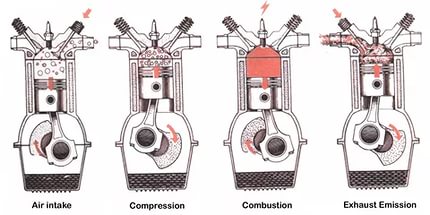
1. The internal combustion engine is called so because fuel is burned…
a) outside the engine;
b) inside the engine.
2. On the inlet stroke …
a) the intake valve opens;
b) the intake valve is closed;
c) the intake and the exhaust valves are closed.
3. On the compression stroke …
a) the intake valve opens;
b) the intake valve is closed;
c) the intake and the exhaust valves are closed.
4. On the power stroke …
a) the intake valve opens;
b) the intake valve is closed;
c) the intake and the exhaust valves are closed.
5. On the exhaust stroke …
a) the exhaust valve opens;
b) the intake valve is closed;
c) the intake and the exhaust valves are closed.
№6. Match the English combinations with the corresponding Russian ones:
|
1 mechanical engineer 2 deal (with) 3 designing cars 4 put into mass production 5 long service life 6 driving safety 7 meet up-to-date demands 8 smooth-acting clutch 9 silent gearbox 10 dependable brakes and steering system 11 subject to tests |
a. долгий срок службы b. запустить в массовое производство c. подвергать испытаниям d. плавное сцепление e. отвечать современным требованиям f. иметь дело (с кем-л., чем-л.) g. надежные тормоза и рулевое управление h. безопасность езды (вождения) i. бесшумная коробка передач j. инженер-механик k. конструирование автомобилей |
№7. Make up comparative and superlative forms of the adjectives and adverbs in the expressions listed below and translate them:
Important properties, pure metals, much experience, new solutions, long service life, good protection, well-known metals, useful devices, high efficiency, bad results, a modern truck, a large team of designers.
№8. Translate these sentences into Russian. Pay attention to the comparative and superlative forms of the adjectives and adverbs:
1. Metals are the most widely used materials in industry.
2. In general, a metal with small grains will be harder and stronger than one with coarse grains.
3. Small amounts of other metals, less than 1 per cent, are often added to a pure metal.
4. Toughness is different from strength: the toughest steels are different from the ones with highest tensile strength.
5. Plastics are lighter and more corrosion-resistant, but they are not usually as strong as metals.
6. Hot-worked products have better ductility and toughness than the unworked casting.
7. Rolling is the most common metalworking process.
8. Medium-carbon steels containing from 0.2 to 0.4 per cent carbon are tougher and are used as structural steels.
Lesson 14
Повторение материала
№1. Put all possible questions to the sentences below.
Example: Fuel is burnt in the engine.
What is burnt in the engine?
Is fuel burnt in the engine?
Fuel is burnt in the engine, isn’t it?
Is fuel burnt in the engine or in the carburettor?
1. Diesel fuel is used in different engines.
2. Fuel and air are mixed in the carburettor.
3. Fuel mixture is ignited in the cylinder combustion chamber.
4. Air is drawn down the air intake.
5. It is located directly above the carburettor.
6. Gas is kept in a special tank.
№2. Put in prepositions where necessary.
1. The pump sends the fluid … the engine.
2. The liquid goes … passages in the engine … the cylinders.
3. There is a separate circuit … the heating system.
4. A separate circuit for cooling the transmission is built … the radiator.
5. The oil is pumped … the transmission … a heat exchanger.
№3. Put the words into the right order.
a) is, the new fuel system, in this car, completely, of a new design, to be employed;
b) the carburettor, the function of, petrol, is, to break up, fi ne particles, into.
c) terminal, battery, cause, corroded, problems, different.
d) use, near, open, don’t, fire, battery, the.
№4. Find the English equivalents (from a-c) to the Russian words.
1. воск a) substance b) mix c) wax
2. транспортное средство a) transport b) means c) vehicle
3. потребление a) use b) need c) consumption
4. охладить a) engine b) carburettor c) cool
5. предотвращать a) to perform b) to prevent c) to avoid
6. клапан a) piston b) radiator c) valve
7. заряжать a) to charge b) to discharge c) to fi ll
8. количество a) quality b) quantity c) a lot
№5. Choose one word from a–d to fill in the gaps.
1. The … belongs to the brake system.
a) shaft b) bonnet c) coolant d) caliper
2. The … belongs to the cooling system.
a) shaft b) wheel c) windshield d) coolant
3. The master cylinder consists of a … and a fluid reservoir.
a) crankshaft b) piston c) drum d) pad
4. The pedal is a strong steel … which transmits the force from your foot to the master cylinder.
a) wheel b) lever c) disk d) pad
5. If you rotate the key in the ignition clockwise:
a) the car goes fast b) the engine switches on c) the lights go on
6. If you turn this steering wheel clockwise:
a) the engine switches on b) the lights go on c) the car turns to the right
№6. Translate the following word-combinations into English:
Самый доступный автомобиль, более прочный материал, наименьшая частица, самый обычный процесс, самое известное изобретение, гладкая поверхность, самый лучший проект, более низкая температура, наилучший сплав, более хрупкий металл, самые вредные вещества, новые методы.
№7. Translate the following sentences into Russian. Change the sentences into negative form and questions:
1. There are many different electric cars around the world.
2. There were special driveways for trucks many years ago.
3. There is hardly a place in the world that is not covered by some line of communication.
4. Today there are several hundred million cars in the world not to mention millions of motorcycles.
5. There were few roads at the end of the 19th century in Russia.
6. There are a lot of employment opportunities in mechanical engineering.
7. There is another version of the car where the rear seat can be completely folded away.
8. There will be eight remotely controlled TV cameras for complex crossing from Hyde Park Corner to the Hammersmith flyover.
№8. Match the English terms with the corresponding Russian ones:
|
1. applied mechanics 2. rigid body 3 negligible 4. constant 5. dimensions 6. quantities 7. scale 8. particle 9. to apply 10. laws of mechanics 11. relation 12. motion 13. condition |
a. применять b. частица c. отношение d. условие e. законы механики f. движение g. величины h. масштаб, размер i. незначительный j. прикладная механика k. размеры l. постоянный m. твердое тело |
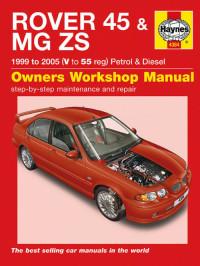
Руководство на английском языке по техническому обслуживанию и ремонту автомобилей Rover 45 и MG ZS 1999-2005 годов выпуска с бензиновыми и дизельными двигателями.
- Автор: Peter T. Gill
- Издательство: Haynes Publishing
- Год издания: 2006
- Страниц: 391
- Формат: PDF
- Размер: 238,7 Mb
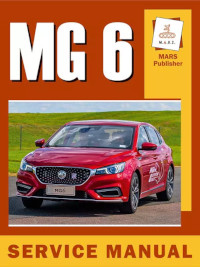
Руководство на английском языке по ремонту автомобилей MG 6.
- Автор: —
- Издательство: М.А.Р.С.
- Год издания: —
- Страниц: 960
- Формат: —
- Размер: —
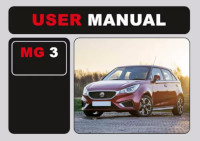
Руководство на английском языке по эксплуатации автомобилей MG 3.
- Автор: —
- Издательство: Automechanic
- Год издания: —
- Страниц: 185
- Формат: —
- Размер: —
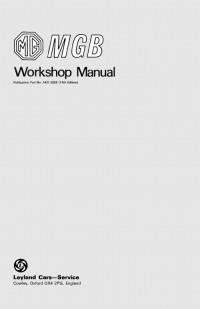
Руководство на английском языке по техническому обслуживанию и ремонту автомобиля MG MGB.
- Автор: —
- Издательство: Leyland Cars — Service
- Год издания: —
- Страниц: 417
- Формат: PDF
- Размер: —
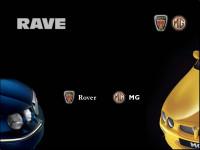
Мультимедийный сборник технической документации и руководств на английском языке по техническому обслуживанию и ремонту автомобилей Rover 25/45/75 и MG ZR/ZS/ZT/TF.
- Автор: —
- Издательство: Rover
- Год издания: —
- Страниц: —
- Формат: —
- Размер: 568,0 Mb
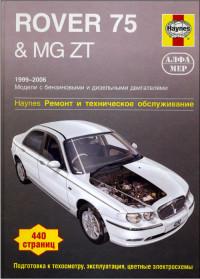
Руководство по техническому обслуживанию и ремонту автомобилей Rover 75 и MG ZT 1999-2006 годов выпуска с бензиновыми и дизельными двигателями.
- Автор: —
- Издательство: Алфамер Паблишинг
- Год издания: 2007
- Страниц: 440
- Формат: PDF
- Размер: 121,2 Mb

Руководство по эксплуатации и ремонту автомобиля MG 350 с 2010 года выпуска с бензиновым двигателем объемом 1,5 л.
- Автор: —
- Издательство: Монолит
- Год издания: —
- Страниц: 364
- Формат: —
- Размер: —

Сборник руководств на английском языке по тюнингу автомобилей MG
- Автор: —
- Издательство: —
- Год издания: 1969
- Страниц: 25/39/82
- Формат: PDF
- Размер: 8,0 Mb

Схемы на английском языке по электрооборудования автомобиля MG MGB.
- Автор: —
- Издательство: —
- Год издания: —
- Страниц: 33
- Формат: PDF
- Размер: 1,2 Mb
I know a lot about cars, man. I can look at any car’s headlights and tell you exactly which way it’s coming.
Чувак, я знаю все о машинах! Я могу посмотреть на передние фары любой машины и сказать, в какую сторону она движется.
Митч Хедберг
Как и автор эпиграфа, я мало что знаю о том, как водить машину, как поменять покрышку, даже по какому номеру звонить в случае поломки машины, но я могу помочь вам разобраться со словами, связанными с автомобильной темой на английском языке 
Типы автомобилей на английском языке
Не берусь говорить за всех, но уверена, что огромное многообразие машин может вызывать смятение у девушек и женщин: кажется, что типов машин так много, что запомнить все просто невозможно. Спешу вас уверить, что типов кузова не так уж много, и уже в зависимости от типа каждая компания дорабатывает свой уникальный дизайн. А кузовы бывают такие:
| Слово | Перевод | Картинка |
|---|---|---|
| Saloon | Седан |  |
| Hatchback | Хэтчбэк | 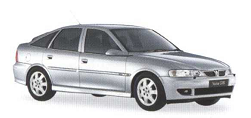 |
| Estate | Универсал | 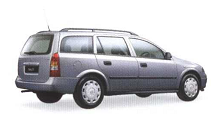 |
| Coupe | Купе |  |
| Convertible | Кабриолет | 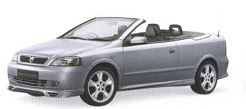 |
| Roadster | Родстер | 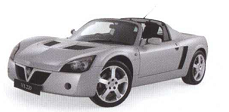 |
| Sport Utility Vehicle (SUV) | Внедорожник | 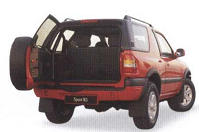 |
| Pickup | Пикап |  |
| Crossover Utility Vehicle (CUV) | Кроссовер |  |
| Limousine | Лимузин |  |
| People carrier (minivan)
Multi-purpose vehicles (MPVs) |
Минивэн
УПВ – универсал повышенной вместимости |
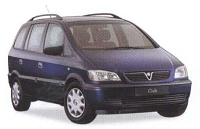 |
| Van | Фургон | 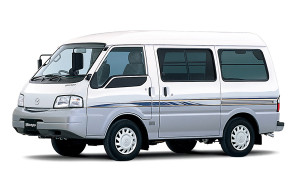 |
| Lorry/Truck | Грузовик | 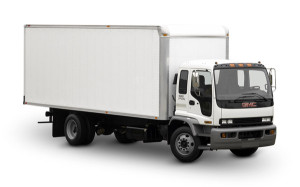 |
Внешние элементы автомобиля на английском языке
Внешнее строение автомобилей приблизительно одинаковое: везде должны быть капот, колеса, кузов. Мы выделим такие части:
- Bonnet /ˈbɒnɪt/ – капот.
- Wing mirror /wɪŋ ˈmɪrə(r)/ – боковое зеркало.
- Windscreen /ˈwɪn(d)ˌskriːn/ – лобовое стекло.
- Rear-view mirror /rɪˈvjuː ˈmɪrə(r)/ – зеркало заднего вида.
- Windscreen wiper /ˈwɪn(d)ˌskriːn ˈwaɪpə(r)/ – щетки стеклоочистителя.
- Door – дверь.
- Boot /buːt/ – багажник.
- Tyre или tire /ˈtaɪə(r)/ – шина.
- Wheel /wiːl/ – колесо.
- Headlight /ˈhedˌlaɪt/ – фара.
- Bumper /ˈbʌmpə(r)/ – бампер.
- Licence (или license) plate /ˈlaɪs(ə)ns pleɪt/ – номерной знак.
- Indicator /ˈɪndɪˌkeɪtə(r)/ – указатель поворота.
Элементы салона и приборы управления автомобилем на английском языке
Естественно, что интерьер каждой машины уникален в своем роде, но есть определенные элементы внутреннего пространства, которые можно встретить в любом автомобиле:
- Back seat – заднее сиденье.
- Armrest – подлокотник.
- Headrest – подголовник.
- Seatbelt – ремень безопасности.
- Door lock – дверной замок.
- Door handle – ручка двери.
А теперь посмотрим на переднюю панель:
- Steering wheel /ˈstɪərɪŋ/ – рулевое колесо.
- Horn /hɔː(r)n/ – сигнал, клаксон.
- Dashboard – приборная панель.
- Air vent – вентиляция.
- Hazard light switch /ˈhæzə(r)d/ – кнопка аварийной сигнализации.
- Glove compartment – бардачок.
- Gear shift – рычаг переключения передач.
- Accelerator – педаль газа.
- Brake pedal – педаль тормоза.
- Clutch pedal – педаль сцепления.
- Handbrake – стояночный тормоз.
- Cigarette lighter – прикуриватель.
Кроме того, если мы будем более пристально разглядывать приборы в салоне автомобиля, то мы обязательно должны указать:
- Temperature gauge /ɡeɪdʒ/ – датчик температуры двигателя.
- Rev counter / tachometer – тахометр (отображает количество оборотов двигателя в минуту).
- Speedometer – спидометр.
- Fuel gauge – указатель уровня топлива.
- Lights switch – переключатель света.
- Odometer – одометр (отображает пробег автомобиля).
- Air bag – подушка безопасности.
- Heater controls – управление обогревом.
- Car stereo – автомобильный приемник, автомагнитола.
Список английских слов на тему «Автомобиль» с переводом
Далее предлагаем вашему вниманию более полный список слов, которые могут быть интересны автолюбителям, изучающим английский язык:
↓ Скачать список слов по теме «Устройство автомобиля на английском языке» (*.pdf, 249 Кб)
| Слово | Перевод |
|---|---|
| Типы кузовов | |
| Convertible | Кабриолет |
| Coupe | Купе |
| Crossover Utility Vehicle (CUV) | Кроссовер |
| Estate | Универсал |
| Hatchback | Хэтчбек |
| Limousine | Лимузин |
| Lorry (BrE), truck (AmE) | Грузовик |
| People carrier (minivan) / Multi-purpose vehicles (MPVs) | Минивэн / УПВ – универсал повышенной вместимости |
| Pickup | Пикап |
| Roadster | Родстер |
| Sedan | Седан |
| Sport Utility Vehicle (SUV) | Внедорожник |
| Van | Фургон |
| Внешние элементы | |
| Aerial | Антенна |
| Back door | Задняя дверь |
| Backup lights | Фонари заднего хода |
| Body | Кузов |
| Bonnet (BrE), hood (AmE) | Капот |
| Boot (BrE), trunk (AmE) | Багажник |
| Brake lights, stop lights | Стоп-сигналы |
| Bulbs | Лампы |
| Bumper | Бампер |
| Caravan (BrE), trailer (AmE) | Прицеп |
| Door handle | Ручка двери |
| Exhaust pipe, tail pipe | Выхлопная труба |
| Fog lights | Противотуманные фары |
| Front door | Передняя дверь |
| Front wheel | Переднее колесо |
| Grill | Решетка радиатора |
| Headlights | Передние фары |
| High beam | Дальний свет |
| Hubcap | Колпак колеса |
| Indicator, turn signal, blinker (informal) | Указатель поворота |
| Lens | Стекло фары |
| Low beam | Ближний свет |
| Moonroof | Прозрачный люк или окно в крыше |
| Number plate (BrE), license (licence) plate (AmE) | Номерной знак |
| Parking lights | Габаритные огни |
| Rear wheel | Заднее колесо |
| Rear window | Заднее окно |
| Roof | Крыша |
| Roof rack | Багажник на крыше автомобиля |
| Side lights | Подфарники |
| Side window | Боковое окно |
| Sunroof | Люк в крыше |
| Tail lights | Задние фонари |
| Tailgate | Задняя дверь (в универсалах) |
| Tyre (BrE), tire (AmE) | Шина |
| Windscreen/Windshield | Лобовое/Ветровое стекло |
| Windscreen wiper | Щетки стеклоочистителя |
| Wing (BrE), fender (AmE) | Крыло автомобиля |
| Wing/Side mirror | Боковое зеркало |
| Оборудование салона | |
| Accelerator (BrE), gas pedal (AmE) | Педаль газа |
| Air conditioner | Кондиционер |
| Air vent | Вентиляция |
| Armrest | Подлокотник |
| Back seat | Заднее сиденье |
| Brake pedal | Тормоз |
| Cab | Кабина |
| Car stereo | Автомобильный приемник, автомагнитола |
| Cigarette lighter | Прикуриватель |
| Clutch | Сцепление |
| Column shift | Подрулевой рычаг переключения передач |
| Cruise control | Круиз-контроль (система автоматического поддержания заданной скорости) |
| Dashboard | Приборная панель |
| Door lock | Дверной замок |
| Front seat | Переднее сиденье |
| Fuel gauge | Указатель уровня топлива |
| Gear lever, gear stick (BrE), gear shift (AmE) | Рычаг переключения передач |
| Glove compartment | Бардачок |
| Handbrake, emergency brake, parking brake | Стояночный тормоз |
| Hazard light switch | Кнопка аварийной сигнализации |
| Headliner | Обшивка потолка в салоне |
| Headrest | Подголовник |
| Heater | Обогреватель, печка |
| Heater controls | Управление обогревом |
| Horn | Сигнал, клаксон |
| Ignition switch | Замок зажигания |
| Indicator switch (BrE), turn signal lever (AmE) | Рычаг включения указателей поворота |
| Lights switch | Переключатель света |
| Odometer | Одометр |
| Passenger seat | Пассажирское сиденье |
| Pedal | Педаль |
| Rear-view mirror | Зеркало заднего вида |
| Seatbelt, safety belt | Ремень безопасности |
| Speedometer | Спидометр |
| Steering wheel | Рулевое колесо |
| Sun visor | Солнцезащитный козырек |
| Tachometer, rev counter | Тахометр |
| Temperature gauge | Датчик температуры двигателя |
| Внутреннее устройство | |
| Accumulator, battery | Аккумулятор |
| Alternator | Генератор |
| Bearing | Подшипник |
| Brake disc (BrE), brake rotor (AmE) | Тормозной диск |
| Brake fluid | Тормозная жидкость |
| Brake pad | Тормозная колодка |
| Camshaft | Распредвал |
| Car alarm | Автосигнализация |
| Carburettor (BrE), carburetor (AmE) | Карбюратор |
| Chassis | Шасси |
| Coolant | Охлаждающая жидкость |
| Cooling system | Система охлаждения |
| Crankshaft | Коленчатый вал |
| Cylinder | Цилиндр |
| Cylinder block | Блок цилиндров |
| Dipstick | Щуп для измерения уровня масла |
| Electrical system | Электрооборудование |
| Engine | Двигатель, мотор |
| Fan | Вентилятор |
| Fan belt | Ремень привода вентилятора |
| Fasteners | Крепеж (гайки, болты и т. п.) |
| Filter | Фильтр |
| Flywheel | Маховик |
| Fuel lines | Топливопроводы |
| Fuse | Предохранитель |
| Gasket | Прокладка |
| Gearbox | Коробка передач |
| Hose | Шланг |
| Hose clamp | Хомут |
| Ignition | Зажигание |
| Injection | Впрыск |
| Oil pump | Масляный насос |
| Petrol tank, fuel tank | Бензобак |
| Radiator | Радиатор |
| Spark plug | Свеча зажигания |
| Spring | Рессора |
| Starter | Стартер |
| Suspension | Подвеска |
| Transmission | Трансмиссия |
| Window roller | Стеклоподъемник |
| Прочее | |
| Diesel engine | Дизельный двигатель |
| Diesel fuel | Дизельное топливо |
| Driving licence (BrE), driver’s license (AmE) | Водительское удостоверение |
| Exit | Съезд с магистрали |
| Fuel | Топливо |
| Garage | Гараж, автомастерская |
| Gear | Передача |
| Highway | Автострада |
| Ignition key | Ключ зажигания |
| Jack | Домкрат |
| Oil | Масло |
| Petrol (BrE), gasoline (AmE) | Бензин |
| Petrol station (BrE), gas station (AmE) | Заправочная станция |
| Pump | Насос |
| Road | Дорога |
| Screwdriver | Отвертка |
| Spanner | Гаечный ключ |
| Spare parts | Запчасти |
| Spare tyre (BrE), tire (AmE) | Запасное колесо |
| Tool | Инструмент |
| Traffic light/signal | Светофор |
Данная статья состоит в основном из существительных, которые описывают составные части автомобиля, но, думаю, вам также будет полезно знать, какие глаголы мы употребляем, когда говорим о транспорте:
- Board a plane/train/bus/tram/ferry/underground – садиться на самолет/поезд/автобус/трамвай/паром/метро.
- Get on/off a plane/train/bus/tram/ferry/underground – садиться в (выходить из) самолет/поезд/автобус/трамвай/паром/метро.
- Get in / out of a plane/car/bus/taxi – садиться в (выходить из) самолет/машину/автобус/такси.
- Catch the plane/train/bus/tram/ferry/underground – поймать (сесть) самолет/поезд/автобус/трамвай/паром/метро.
- Drive a car/bus/taxi – водить машину/автобус/такси.
Что ж, надеюсь, такое обилие новых слов не смутило вас, и вы с легкостью сможете запомнить все фразы. А для того чтобы закрепить материал, предлагаем пройти тест по этой теме!
Тест
Тест на тему «Автомобиль на английском языке»
Если вы нашли ошибку, пожалуйста, выделите фрагмент текста и нажмите Ctrl+Enter.
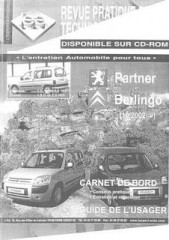
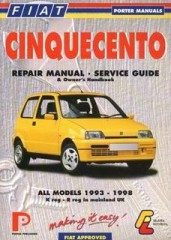
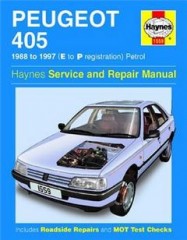
30.11.-0001 00:00
Инструкция по ремонту и обслуживанию Peugeot 405 (только модели c бензиновыми двигателями).Дано детальное описание всех узлов и агрегатов и советы по их эксплуатации и техобслуживанию.Чертежи, таблицы и схемы электрооборудования.
-
nepoladok -
0 -
0
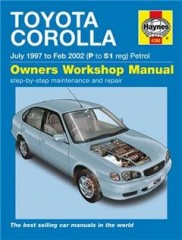
30.11.-0001 00:00
Подробное описание ремонта узлов и агрегатов автомобиля Toyota Corolla.
-
nepoladok -
0 -
0

30.11.-0001 00:00
Два подробных руководства(мануала) по эксплуатации и по ремонту автомобиля Toyota Sequoia. Руководство подходит для всех моделей 2001-2006 годов выпуска.
-
nepoladok -
0 -
0
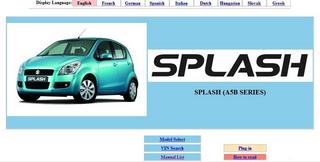
30.11.-0001 00:00
Дополнительно: Для работы он-лайн нужен IE. Не работает в мазиле.Установка: Монтируем в алкоголе или UltraISO, запускаем и работаем он-лайн. Есть возможность работы по VIN-коду
-
nepoladok -
0 -
0
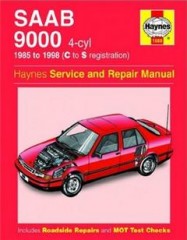
30.11.-0001 00:00
В настоящем руководстве рассматриваются неисправности и их устранение, техническое обслуживание, методы ремонтаSaab 9000 1985-1998гг. выпуска с бензиновыми двигателями 2.0 л (1985cc) и 2,3 литра (2290cc) 4-цил.Не рассмотрен двигатель V6. В руководстве описана конструкция автомобиля, изложены последовательно и подробно различные сборочно-разборочные операции, ремонтные и регулировочные работы на автомобиле. Описаны приемы работы в условиях специализированной мастерской с использованием специальных приспособлений.Также даны конкретные рекомендации по уходу за автомобилем в условиях домашней мастерской.
-
nepoladok -
0 -
0
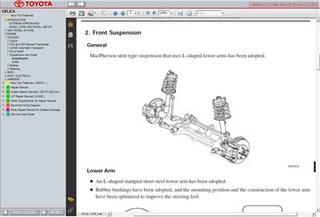
30.11.-0001 00:00
Подробно описаны все узлы автомобиля, способы их демонтажа и монтажа, инструменты.полные эл.схемы, иллюстрации.
-
nepoladok -
-1 -
0
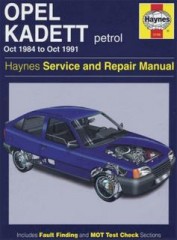
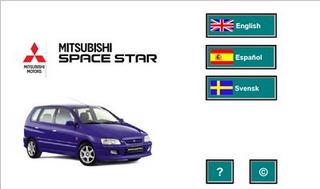
30.11.-0001 00:00
Подробное руководство содержит описание операций по снятию,разборке, проверке, регулировке, сборке, установке узлов,деталей и т.п., и предназначено для механиков ремонтно обслуживающих предприятий.полные эл.схемы.
-
nepoladok -
0 -
0
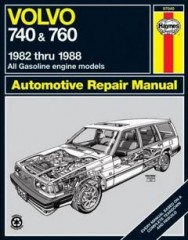
30.11.-0001 00:00
Инструкция по ремонту и обслуживанию автомобилей Volvo 740 и 760 c бензиновыми и турбодизельными двигателями. Дано детальное описание всех узлов и агрегатов и советы по их эксплуатации и техобслуживанию. Чертежи, таблицы и схемы электрооборудования.
-
nepoladok -
0 -
0
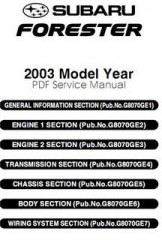
30.11.-0001 00:00
Руководство по ремонту автомобиля SUBARU FORESTER 03-05 на фирменных СТО.В руководстве приведены особенности конструкции узлов и систем автомобиля SUBARU FORESTER 03-05 г.г. выпуска.Описан процесс разборки и ремонта всех систем с иллюстрирациями и рекомендациями.Подробно описаны неисправности и способы диагностики и ремонта.Приведены схемы узлов и агрегатов, электрооборудования,электрических соединений.
-
nepoladok -
0 -
0
← Предыдущая Следующая → 1 2 3 4 Последняя
Показаны 1-12 из 105
Спасибо этому sanek10091985 парнишке за ссылочку — mbfan.ru/documents/skachat-instruktsii Очень много чего нужного и полезного нашла!
Ниже описание того, что есть по ссылке:
Карбюраторы автомобилей Мерседес на русском языке (pdf).
Серия книг «Регулируем сами». Руководство включает в себя описание регулировки карбюраторов Solex 4A1, Zenith 35/40-35/42INAT (x2), Stromberg 175 CDTU, Stromberg 175 CDT, Pierburg 2E-E автомобилей 280/C, 280 S, 230.6, 250, 250 С (W114), 230, 230 С (W123), 200, 230 (W115), 190 (W201), 200/200 Т (W123), 200 (W124).
Автоматические коробки передач Мерседес на русском языке (pdf)
Принципы работы, устройство, диагностика и ремонт.Пошаговое описание процедур по установке, снятию, разборке, сборке и ремонту АКПП моделей 722.3, 722.4, 722.5, 722.6.
Мультимедийная система Mercedes COMMAND на английском языке (pdf).
Мануал использования мультимедийной системы Mercedes COMMAND. Пособие по изучению поможет максимально эффективно использовать функионал системы, понять навыки комфортного и безопасного вождения. Отдельные термины могут различаться в зависимости от класса, модификации и года выпуска автомобиля. На англискомй языке с иллюстрациями.
Пособие по изучению автоматической бесступенчатой коробки передач Autotronic на русском языке (pdf).
Пособие содержит подробную информацию об устройстве автоматической бесступенчатой коробки передач Autotronic, включая схемы и иллюстрации.
Пособие по изучению автоматической коробки перемены передач 722.9 на русском языке (pdf)
Пособие содержит подробную информацию об устройстве автоматической коробки перемены передач 722.9, включая схемы и иллюстрации.
Устройство кузова А209 на русском языке (pdf)
Пособие содержит подробную информацию об устройстве кузова А209, механизма складной крыши, принцип складываемости, устройство дуг безопасности, включая схемы и иллюстрации.
Е-klasse:
E-klasse W124 Руководство по ремонту автомобиля на русском языке (pdf)
В руководстве приведены данные по ремонту W124 200, 200E, 230E, 260E, 300E, 230CE, 200T, 200TE, 230TE, 300E24, 300TE24, 200D, 200TD, 250D, 250TD, 300D, 300TD с кузовами купе, седан и универсал с бензиновыми и дизельными двигателями. Руководство предназначено для технических центров и автосервисов и технически подготовленных водителей.
E-klasse W123 Руководство по ремонту автомобиля на русском языке (pdf)
Книга предназначена для автолюбителей и сервисных центров. Подробно описано устройство автомобиля Мерседес W123, даны рекомендации по ремонту c подробными иллюстрациями. Автор книги известный немецкий инженер Ханс-Рюдигер Этцольд.
E-klasse W126 Руководство по устройству, техническому обслуживанию и ремонту Mercedes W126 на русском языке (pdf)
Руководство включает разделы по устройству, техническому обслуживанию и ремонту моделей W126 с двигателями 110, 116, 117. В ней содержатся подробные сведения о регулировке элементов системы управления двигателями, важные советы для проведения самодиагностики и ремонта, электросхемы м ногое другое.
E-klasse Купе и кабриолет Инструкция по эксплуатации на английском языке (pdf)
Официальное печатное издание, инструкция E-klass, Купе и Кабриолет. Инструкция на английском языке.
Е-klasse W210 Руководство по эксплуатации на русском языке (pdf)
Содержит несколько разделов: Рабочее место водителя, Обслуживание, Управление автомобилем, Система оповещения и сигнализации неисправностей, Самопомощь, Уход, Теххарактеристики.
E-klasse (тип 211) Информационный модуль по изучению устройства легковых автомобилей на русском языке (pdf)
Информационный модуль по изучению устройства легковых автомобилей Е-класса (тип 211) включает в себя изучение общего устройства автомобиля и его основных систем, кузова, ходовой части, двигателя, отличительные особенности электрооорудования и многое другое.
Скачать информационное руководство по изучению автомобиля Мерседес Е-класса тип 211
Руководство для легковых автомобилей Мерседес Е-класса (тип 211) на немецком языке (pdf)
Руководство содержит порядок диагностики электрооборудования, устройство аудио-системы автомобиля, системы COMAND, подробную расшифровку кодов ошибок электронной системы управления на автомобилях Е-класса (тип 211) и многое другое.
Е-класс (тип 211) Устройство и работа аккумулятора на Мерседес Е-класса (тип 211) на немецком языке (pdf).
Устройство и работа аккумулятора на Мерседес Е-класса (тип 211) на немецком языке (pdf)
Руководство объясняет устройство аккумулятора, диагностика электрооборудования, подробную расшифровку кодов ошибок на автомобилях Е-класса (тип 211) и многое другое.
Устройство и работа аккумулятора на Мерседес Е-класса (тип 211) на немецком языке
A-klasse:
A-klasse_W168 Инструкция на русском языке (pdf)
Руководство по эксплуатации, техническое обслуживание, двигатель, электрооборудование двигателя, система впрыска топлива в бензиновых двигателях, система питания дизельных двигателей, системы отопления, охлаждения, вентиляции, питания и выпуска отработанных газов, механическая и автоматическая трансмиссии, сцепление, приводные валы, тормозная система, рулевое управление и подвеска, кузов и бортовое электрооборудование, отделка салона, выявление неисправностей, принципиальные электрические схемы.
A-klasse (С/W169) Обучающее руководство на русском языке (pdf)
Оригинальное учебное пособие для владельцев автомобилей Mercedes-Benz A-klasse (С/W169), которое создано в 2004 году по материалам фирмы «DaimlerChrysler» AG. В курс обчуения вошли разделы о 4-е бензиновых и 3-дизельных двигателях, два новых варианта коробки передач и полностью разработанная ходовая часть, а также темы из области электрооборудования, телематики и кузова/оснащения А-класса (C/W 169).
C-klasse:
C-klasse Устройство, обслуживание, ремонт и эксплуатация на русском языке (pdf)
Рассмотрены модели С180, С200, С200D, C220, C220D, C250D, C280 с бензиновыми и дизельными двигателями, начиная с 1993-го года выпуска.
C-klasse Купе, инструкция по эксплуатации на английском языке (pdf)
Официальное печатное издание, инструкция С-klass, Купе. Инструкция на английском языке.
C-klasse W201 (190/190E и 190D) Уход, техническое обслуживание и ремонт на русском языке (pdf)
Написана дипломированным инженером по автомобильной технике доктором Хансом-Рюдигером Этцольдом. Название: «Это делается так». Подробно описано техобслуживание и ремонт автомобилей с бензиновым и дизельным двигателями, механическая и автоматическая КПП, тормозная система, электрооборудование и многое другое.
C-class 2013, руководство по эксплуатации на английском языке (pdf)
Руководство по эксплуатации Mercedes C-class 2013.Подробный оригинальный сборник для помощи в изучении автомобиля, словарь терминов, устройство системы управления, расшифровка обзначение и клавиш приборной панели, коды неисправностей и многое другое. Сборник на английском язые с иллюстрациями.
CL-class 2005, руководство по эксплуатации на английском языке (pdf)
Руководство по эксплуатации Mercedes CL-class 2005 г.в.Подробный оригинальный сборник для помощи в изучении автомобиля, команд панели управления, расшифровка обзначение и клавиш приборной панели, коды неисправностей и многое другое. Сборник на английском язые с иллюстрациями.
CLK-klasse:
Mercedes-Benz CLK Руководство по эксплуатации на русском языке (pdf)
Руководство по эксплуатации Mercedes-Benz CLK-класса поможет подробно ознакомиться владельцу с его автомобилем и изучить все нюансы его успешного обслуживания. В нее включены разделы о управлении и обслуживании, системе оповещения и сигнализации, уходу и самопомощи.
M-klasse:
Руководство по изучению ходовой части М-класса (тип 163) на русском языке (pdf)
Руководство по изучению устройства ходовой части легковых автомобилей М-класса (тип 163) включает в себя устройство двигателей с подробными схемами электрооорудования, электронной системой управления КПП, устройство системы ETS/ESP, и очень много другой полезной информации для понимания принципа работы главных систем автомобиля.
Учебное пособие по изучению устройства легковых автомобилей Мерседес М-класса (тип 164) на русском языке (pdf)
Доступное и многогранное учебное пособие по изучению устройства легковых автомобилей М-класса (тип 164) включает в себя устройство двигателей с электрооорудованием, системой охлаждения, а также состав и схемы общего электрооборудования автомобиля, конструкцию кузова и многое другое.
S-klasse:
Руководство по ремонту S-klasse 280/280SE/380SE/500SE на русском языке (pdf)
Руководство по ремонту автомобиля Мерседес Бенц S-class 280/280SE/380SE/500SE содержит общие указания по устройству, правильной эксплуатации и общи советы по самостоятельеному ремонту. Информация в книге изложена в простой доступной форме.
Руководство по эксплуатации S-klasse W220 на русском языке (pdf)
Руководство по эксплуатации автомобиля S-klasse содержит описание рабочего места водителя, принципы обслуживания и эксплуатации, описание систем оповещения и сигнализации неисправностей, практические советы по самопомощи.
S-klasse (тип 220) Учебное пособие по изучению устройства кузова на русском языке (pdf)
Учебное пособие по изучению устройства кузова легковых автомобилей S-класса (тип 220) включает в себя изучегие конструкции кузова, устройства переднего и заднего бампера, остекление, устройства пассивной безопасности и многое другое.
S-класса (тип 220) Учебное пособие для легковых автомобилей Мерседес (электрооборудование) на русском языке (pdf)
Учебное пособие содержит вводную документацию об автомобиле Мерседес S-класса (тип 220) в целом, а также подробную информацию об устройствах электрооборудования автомобиля.
Учебное пособие. Общий осмотр автомобиля Мерседес S-класс (тип 220) на русском языке (pdf)
Учебное пособие содержит информацию об устройстве мультифункционального руля, электронной системы управления, устройство моторного отсека, багажника и многое другое.
Вводная документация по изучению ходовой части S-класс на русском языке (pdf).
Пособие содержит информацию об устройстве ходовой части Мерседес S-klass, устройство подвески, системы рулевого управления, тормозной системы и другое.
V-klasse:
Mercedes-Benz Vito Руководство по эксплуатации на русском языке (pdf)
Сборник предназначен для оказания помощи во всех ситуациях, которые могут возникнуть с Вашим автомобилем. В нем содержится подробная и доступная информация, необходимая для первой успешной поездки, все нужное о средствах безопасности и защиты, принципы правильной эксплуатации автомобиля, советы по технической помощи и мелкому восстановительному ремонту. Только самое необходимое и ничего лишнего.
Mercedes-Benz Vito CDI Руководство по эксплуатации, техобслуживание, ремонт, особенности на русском языке (pdf)
Подробное и доступное руководство издательcтва «Автомастер» содержит сведения по правильной эксплуатации, ремонту и регулировке системы управления автомобилем Mercedes-Benz Vito CDI, модель 638, важные советы для проведения самостоятельной диагностики, ремонту, обзор устройства дизельного двигателя, электросхемы и многое другое.
Mercedes-Benz Vito, Viano (2003- 2008 г.в.) руководство по эксплуатации на русском языке (pdf)
Книга содержит руководство по эксплуатации, техническое обслуживание, ремонт, особенности конструкции и многостраничный раздел, содержащий электросхемы, для Mercedes-Benz Vito и Viano 2003-2008 годов выпуска. Эта информация досконально поможет водителю разбораться в работе всех главных функциональных устройств и систем автомобиля.
Sprinter:
Mercedes-Benz Sprinter руководство по эксплуатации на русском языке (pdf)
Руководство по эксплуатации Mercedes-Benz Sprinter содержит необходиую информацию для комфортного вождения и избежания неприятных
и опасных ситуаций на дорогах. Содержит подробное объяснение работы панели управления, тормозной системы, все об устройстве автомобиля и советы по устранению мелких неполадок.
Слова на тему «Автомобиль» — это довольно большой слой лексики в английском языке. К нему относятся многочисленные термины об устройстве автомобиля, дороге, правилах дорожного движения. В этой статье мы рассмотрим наиболее общеупотребительную лексику, которую используют не автомеханики, а все, кто водят машину.
Подборка слова и выражений разделена на пять тем. Первые три — это существительные (части автомобиля, детали салона, дорога), я не стал добавлять к ним примеры предложений, т. к. с их употреблением не должно возникнуть трудностей. Глаголы на тему «Вождение», «Авария» приведены с примерами, чтобы было понятнее, как они употребляются.
Обратите внимание, что в автомобильная лексика на английском содержит много слов, отличающихся в британском и американском вариантах языка. Они отмечены аббревиатурами UK (британский вариант) и US (американский вариант).
Содержание:
- Основные части автомобиля.
- В автомобиле (детали салона).
- Слова на тему «Дорога».
- Глаголы на тему «Вождение автомобиля».
- Выражения на тему «Авария, проблемы с машиной».
Основные части автомобиля на английском
| headlights | фары |
| low beams | ближние фары |
| high beams | дальние фары |
| bumper (UK) | бампер (UK) |
| fender (US) | бампер (US) |
| windshield (US) | лобовое стекло (US) |
| windscreen (UK) | лобовое стекло (UK) |
| wipers (windshield wipers) | дворники |
| boot (UK) | багажник (UK) |
| trunk (US) | багажник (US) |
| rear view mirror | зеркало заднего вида |
| side mirrors (sideview mirrors) | боковые зеркала |
| tyre (UK) | камера, шина (UK) |
| tire (US) | камера, шина (US) |
| flat tire | спущенное колесо |
| wheel | колесо |
| steering wheel | руль |
| bonnet (UK) | крыша, капот (UK) |
| hood (US) | крыша, капот (US) |
| tank | бак |
| taillights | задние фары |
| door | дверь |
| silencer (UK) | глушитель (UK) |
| muffler (US) | глушитель (US) |
| spare parts | запчасти |
| spare tire | запасное колесо |
| petrol (UK) | бензин (UK) |
| gas (US) | бензин (US) |
| licence plate | номерной знак |
| licence plate number | номер автомобиля |
| make | марка автомобиля |
| model | модель автомобиля |
Скачать PDF «Устройство автомобиля на английском языке»
Примечания:
- Со словом fender (бампер) есть интересное выражение fender-bender (to bend — гнуть). Так называют маленькое ДТП с незначительными повреждениями автомобиля.
- Номер машины по-другому, более официально, может называться vehicle registration number. В разговорной так длинно обычно не говорят, предпочитая варианты: registration number, plate number, licence plate number, licence plate.
- Вам могут встретиться слова licenSe и licenCe. Во всех вариантах английского, кроме американского, licenCe — это существительное, а licenSe — это глагол. В американском английском не используется слово licenCe, а слово licenSe может быть и глаголом, и существительным. В связи с этим номер автомобиля может называться license plate (США) или licence plate (другие страны).
В автомобиле (детали салона)
| dashboard | приборная панель |
| back seat | заднее сиденье |
| front seat | передне сиденье |
| seatbelt | ремень безопасности |
| door lock | дверной замок |
| door handle | дверная ручка |
| glovebox (glovie) | бардачок |
| horn | гудок |
| accelerator | педаль газа |
| brake | педаль тормоза |
| clutch | педаль сцепления |
| handbrake | ручной тормоз |
| lighter | прикуриватель |
| manual transmission (UK) | ручная коробка передач (UK) |
| standart (US) | ручная коробка передач (US) |
| automatic transmission | автоматическая коробка передач |
| gearshift | рычаг переключения передач (ручн.) |
| gear selector | рычаг переключения передач (на автомат. коробке) |
| airbag | воздушная подушка |
Примечания:
- horn — это сам гудок, сигналить — to honk (the horn).
- Со словом back seat (заднее сиденье) есть выражение back seat driver — буквально, «водитель на заднем сиденье». Так говорят о пассажире, который подсказывает водителю, как ехать, а также, в более широком смысле, о человеке, который любит объяснять «как правильно», хотя сам не участвует в процессе.
Скачать PDF «Салон автомобиля»
Английские слова на тему «Дорога»
| road | дорога |
| route | трасса, шоссе |
| motorway (UK) | магистраль (UK) |
| highway (US) | магистраль (US) |
| onramp | выезд на магистраль |
| lane | полоса движения |
| lane marking (road surface marking) | дорожная разметка |
| speed bump | лежачий полицейский |
| crossroad (UK) | перекресток (UK) |
| intersection (US) | перекресток (US) |
| road sign | дорожный знак |
| traffic light | светофор |
| pavement (UK) | тротуар (UK) |
| sidewalk (US) | тротуар (US) |
| crosswalk | пешеходный переход |
| pedestrian | пешеход |
| car park (UK) | парковка (UK) |
| parking lot (US) | парковка (US) |
| parking space | парковочное место |
| traffic | дорожное движение |
| traffic jam | пробка |
| rush hour | час пик |
Скачать PDF «Дорога»
Выражения на тему «Вождение автомобиля»
- to buckle up — пристегнуться
Make sure that the passengers are buckled up. — Убедитесь, что пассажиры пристегнуты.
- to fasten (put on) seatbelt — надеть ремень безопасности
Fasten your seatbelts, please. — Пожалуйста, пристегните ремни.
- to brake — тормозить
Do you know how to brake? — А ты тормозить умеешь?
- to hit the brakes (разг.) — тормозить (разг.)
I had to hit the brakes when I saw a pedestrian. — Мне пришлось затормозить, когда я увидел пешехода.
- to stall — заглохнуть (о двигателе)
Can you help me? My car stalled. — Вы можете мне помочь? Моя машина заглохла.
- to step on the accelerator — нажать на газ
Shift into first and step on the accelerator. — Переключитесь на первую скорость и нажмите на газ.
- to accelerate (to speed up) — ускоряться
You can speed up on a highway. — Ты можешь прибавить скорости на магистрали.
- to reverse — сдавать назад
Please, reverse carefully. There is a lemo behind us. — Пожалуйста, сдавай назад осторожно. Там позади нас лимузин.
- to honk (the horn) — сигналить (гудок)
He could not hear the car honking behind him. — Он не слышал, как сзади гудела машина.
- to make a U-turn — резко разворачиваться
He struggled with the steering wheel, attempting to make U-turn. — Он боролся с рулем, пытаясь совершить резкий разворот.
- to follow the speed limit — соблюдать скоростной режим
We can drive where we want, but we have to follow the speed limit. — Мы можем ездить, где хотим, но обязаны соблюдать скоростной режим.
- to exceed the speed limit (to speed) — превышать скорость
Don’t exceed the speed limit, speeding may cause collisions with animals. — Не превышайте скорость, превышение скорости может привести к столкновению с животными.
- to run a red light — ехать на красный свет
I was in hurry and ran a red light. — Я торопился и проехал на красный свет.
- to tailgate — ехать впритык (к машине спереди), не соблюдать дистанцию
Tailgating causes many car accidents. — Несоблюдение дистанции приводит ко многим авариям.
- to pull over (off) — остановиться (и съехать с проезжей части)
If your car starts to overheat, pull over immediately. — Если ваша машина начала перегреваться, немедленно остановитесь.
- to pull out of — выезжать (напр. с парковки)
The bus pulled out of the parking lot. — Автобус выехал с парковки.
- to cut (someone) off — подрезать
I speeded up and someone cut me off. — Я прибавил газу, и кто-то меня подрезал.
- to park — парковаться
Sorry, you can’t park here. — Извините, здесь нельзя парковаться.
- to pass a car — обгонять машину
The «Do Not Pass» sign indicates that passing a car is prohibited. — Знак «Обгон запрещен» обозначает, что нельзя обгонять машину.
- to change lanes — переехать на другую полосу, перестроиться
The driver decided to change lanes but didn’t make sure that it was safe to do. — Водитель решил перестроиться на другую полосу, но не убедился, что это безопасно.
- to change gear — переключать передачу
Learn how to change gear first. — Сначала научитесь переключать передачу.
- to run out of gas (petrol) — израсходовать топливо
Where is the nearest gas station? We are running out of gas. — Где ближайшая заправка? У заканчивается бензин.
- to fill up (the car) — заправить (машину)
Always fill up the car before a long drive. — Всегда заправляйте машину перед долгой поездкой.
- to flag (someone) down wave someone down — тормозить машину (жестом)
The police officer flagged me down and asked for a drivers licence.
- to get in — сесть в машину
Get in! Get in the car! — Садись! Садись в машину!
- to get out — выйти из машины
I’d like to get out at the post office. — Я бы хотел выйти у почтового отделения.
- to pick (someone) up — подобрать пассажира
Can you pick me up at nine o’clock? — Вы можете забрать меня в девять часов?
- to drop (someone) off — высадить пассажира
Drop him off at the nearest subway station. — Высадите его у ближайшей станции метро.
- to indicate — показывать поворот
Never turn without indicating. — Никогда не поворачивай, не показывая поворот.
- to drive off — уезжать откуда-то
I shut the door and the cab drove off. — Я закрыл дверь и такси уехало.
- to give (someone) a lift (UK) — подвозить (UK)
- to give (someone) a ride (US) — подвозить (US)
Can you give me a ride, please? — Не могли бы меня подвезти?
Скачать PDF «Вождение на английском языке»
Выражения на тему «Авария, проблемы с машиной»
- car accident (car crash) — автомобильная авария
In the beginning of the movie a few people died in a car accident. — В начале фильма несколько человек погибли в автомобильной аварии.
- to have a flat tire (puncture) — пробить колесо
On the way to the airport, we had a flat tire. — По дороге в аэропорт у нас спустило колесо.
- to break down — ломаться (о машине)
Sorry, I’m gonna be late, my car broke down. — Извини, я опоздаю, моя машина сломалась.
- tow truck — эвакуатор
There is nothing you can do, call a tow truck. — Ты здесь ничего уже не сделаешь, вызывай эвакуатор.
- to tow — эвакуировать
Cars parked on the road will be towed. — Машины, оставленные на дороге, будут эвакуированы.
- to run into (someone) — врезаться в кого-то
The first time I was driving a car, I ran into a tree. — В первый раз, когда я водил машину, я врезался в дерево.
- to slam on the brakes — резко затормозить
The driver in front of me slammed on the brakes and I nearly ran into him. — Водитель впереди меня резко затормозил, и я едва не врезался в него.
- to run over (someone) — переехать кого-то
It looks like they are going to run over someone. — Кажется, они сейчас кого-нибудь переедут.
- to sideswipe — задеть сбоку машину
See those scratches? I got sideswiped by some idiot. — Видишь эти царапины? Какой-то идиот меня задел.
- to rear-end — въехать сзади в машину
I broke suddenly and she rear-ended me. — Я резко затормозил, и она въехала в меня сзади.
- to veer into oncoming traffic — выехать (резко) на встречную полосу
His car veered into oncoming traffic and ran into a tractor. — Его машина свернула на встречную и врезалась в трактор.
- to drive on the wrong side of the road — ехать не на той стороне (по встречной)
And then I noticed that we were driving on the wrong side of the road. — И тут я заметил, что мы ехали по встречной полосе.
- to lose control — не справиться с управлением
The driver lost control and the car ran into a brick wall. — Водитель не справился с управлением, и машина врезалась в кирпичную стену.
- to skid — попасть в занос
The car skidded on a patch of ice and veered into a snow bank. — Машину занесло на льду и вынесло в сугроб.
- to roll over — перевернуться
The driver was thrown from his car when it rolled over. — Водителя выбросило из машины, когда она перевернулась.
- drunk driving — вождение в нетрезвом виде
There are laws against drunk driving, but not against driving with a hangover. — Есть законы запрещающие вождение в нетрезвом виде, но не вождение с похмелья.
- reckless driving — опасное вождение
Their car rolled over, possibly as a result of reckless driving. — Их автомобиль перевернулся, возможно, в результате опасного вождения.
- distracted driving — невнимательное вождение
Distracted driving is the act of driving while engaged in other activities such as talking on the phone. — Невнимательное вождение — это вождение, при котором водитель занимается посторонними делами, такими как разговор по телефону.
- to hit and run — сбить человека и скрыться
She was hit and run but fortunately she was not heavily injured. — Ее сбила машина, которая затем скрылась, но, к счастью, она не получила тяжелых травм.
- to have a head-on collision — врезаться в лоб, совершить прямое столкновение
When Robert tried to pass a car he had a head-on collision with a truck. — Когда Роберт пытался обогнать машину, он совершил прямое столкновение с грузовиком.
- a driving ban — лишение прав
I got a two years driving ban for drunk driving. — Меня лишили прав на два года за вождение в нетрезвом виде.
- to have a near miss — проскочить, едва не столкнувшись, чудом избежать аварии
I used to be a reckless driver until a had a near miss. — Я ездил неосторожно, пока едва не попал в аварию.
Скачать PDF «Говорим об аварии на английском»
Здравствуйте! Меня зовут Сергей Ним, я автор этого сайта, а также книг, курсов, видеоуроков по английскому языку.
Подпишитесь на мой Телеграм-канал, чтобы узнавать о новых видео, материалах по английскому языку.
У меня также есть канал на YouTube, где я регулярно публикую свои видео.
На основании Вашего запроса эти примеры могут содержать грубую лексику.
На основании Вашего запроса эти примеры могут содержать разговорную лексику.
Перевод «Руководство по эксплуатации автомобиля» на английский
Руководство по эксплуатации автомобиля. Содержит описание всех органов управления и их функции.
Руководство по эксплуатации автомобиля Тойота Королла 2007 модельного года которая идет вместе с автомобилем
Manual car Toyota Corolla 2007 model year, which goes along with the car
Руководство по эксплуатации автомобиля Хундай Санта Фе, которая обеспечивает доступное автоматическое описание эксплуатации и технического обслуживания таких систем как:
User manual car Hyundai Santa Fe which provides affordable auto description of operation and maintenance of such systems as:
Руководство по эксплуатации автомобиля Хонда Сивик Тип R является основным… [Подробнее]
В конце книги представлено руководство по эксплуатации автомобиля.
At the end of the book presents a manual car.
Представил электронную копию технической руководство по эксплуатации автомобиля Виллис МБ.
Submitted an electronic copy of the technical manual for the car Willys MB.
Либо он снова что-то покурил, либо руководство по эксплуатации автомобиля — выдумка.
В этом руководстве также электрические схемы Мицубиси L200, отдельный раздел-это руководство по эксплуатации автомобиля и рекомендации по периодическому обслуживанию.
This guide also electrical schemes Mitsubishi L200, a separate section is a manual car and recommendations for periodic maintenance.
Теперь, когда у вас есть руководство по эксплуатации автомобиля, давайте узнаем, как заменить воздушный фильтр в вашем автомобиле
Now that you have a vehicle manual, let’s learn how to change the air filter in your car
Оригинальное руководство по эксплуатации автомобиля Понтиак ВАЙБ. Содержит важную информацию для чтения, которое необходимо для всех владельцев этого автомобиля.
Original user manual car Pontiac VIBE. Contains important information to read which is necessary for all owners of this car.
Отмечается, что на транспортных средствах будет заменено руководство по эксплуатации автомобиля и при необходимости инструкция по эксплуатации кунга, а также при необходимости обновлено электронное руководство по эксплуатации.
It is noted that vehicles will be replaced by manual operation of the vehicle and, if necessary, the manual kung, and, if necessary, updated the electronic user manual.
КИА cee’d (ЭД) 2006-2009 — официальный руководство по эксплуатации автомобиля, которую вручают хозяину автомобиля при покупке нового автомобиля Kia.
KIA CEE’d (ED) 2006-2009 — the official manual of the car, which is awarded to the car owner when buying a new KIA car.
Также в этом издании представлено руководство по эксплуатации автомобиля Пт Крузер и инструкции по его технического обслуживания и описание устройства Крайслер Пт Крузер. Эти автомобили комплектуются бензиновыми двигателями объемом 1,6; 2,0; 2,4 и 2,4 л Турбо.
Also in this publication provides guidance for operation of the vehicle the PT Cruiser and instructions for its maintenance and description of the device the Chrysler PT cruiser. These cars are equipped with petrol engines with volume 1,6; 2,0; 2,4 and 2.4 liters Turbo.
«Почему нужно обязательно читать руководство по эксплуатации автомобиля
Официальному дилеру руководство по эксплуатации автомобиля Шевроле Авео, Каптива.
Original dealer manual car Chevrolet Aveo, Captiva.
Руководство по эксплуатации автомобиля. шума автомобиля ВМШ 130i.
Car to drive: BMW 130i.
Honda CR-V/ Руководство по эксплуатации автомобиля Honda CR-V/ Безопасность водителя и пассажиров/ Дополнительная информация о подушках безопасности/ Компоненты системы подушек безопасности
Honda CR-V/ Honda CR-V Owner’s Manual/ Driver and Passenger Safety/ Additional Information About Your Airbags/ Additional Safety Precautions
Результатов: 17. Точных совпадений: 17. Затраченное время: 50 мс
Documents
Корпоративные решения
Спряжение
Синонимы
Корректор
Справка и о нас
Индекс слова: 1-300, 301-600, 601-900
Индекс выражения: 1-400, 401-800, 801-1200
Индекс фразы: 1-400, 401-800, 801-1200


